Vol. 71, No. 18 (2022)
2022-09-20
SPECIAL TOPIC—Novel properties of low-dimensional materials
COVER ARTICLE
INVITED REVIEW
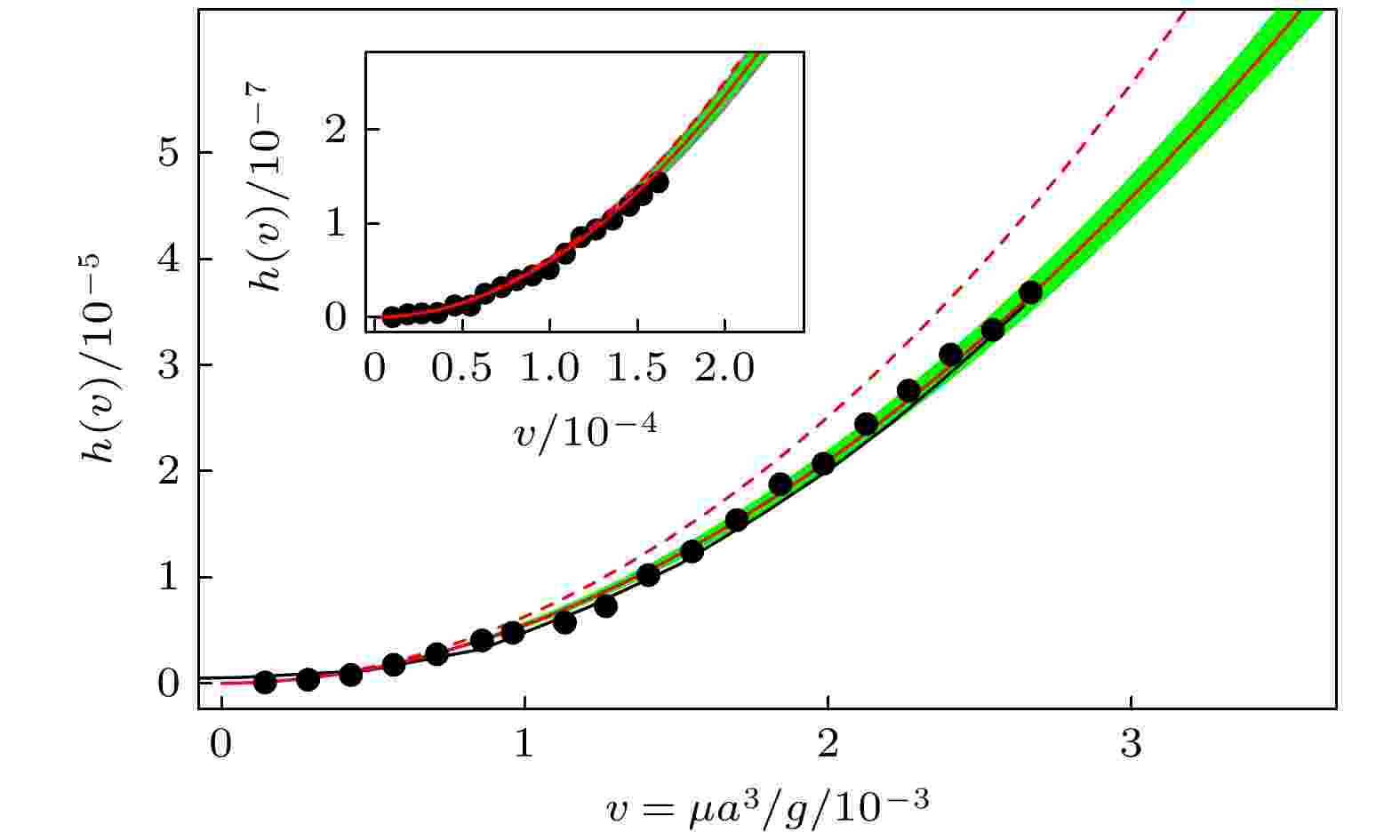
INVITED REVIEW
2022, 71 (18): 186701.
doi: 10.7498/aps.71.20221322
Abstract +
As early as the 1950s, Prof. Yang and his collaborators realized that the most important interaction effects in a dilute quantum gas can be described by the s-wave scattering length between particles. This insight leads to universal descriptions of the interaction effects without the detailed knowledge of the interaction potential. They derived a formula expanding the energy density in terms of the gas parameter. This formula is later known as the Lee-Huang-Yang correction. However, it took forty years for the experimentalists to overcome several challenges and finally achieve degenerate quantum gases of atoms in 1995. The developments after 1995 have led to an exciting field known as “quantum gases” or “ultracold atomic gases”. The ultracold atom system has flexible tunability, allowing both the scattering length and the dimensionality to vary. The Lee-Huang-Yang corrections were observed from several experiments on ultracold atoms by increasing the scattering length. In addition, by reducing the dimensionality to one-dimension, several experiments on ultracold atoms have confirmed the Yang-Yang thermodynamics for one-dimensional bosons that Prof. Yang obtained in the 1960s and the large-N limit of one-dimensional fermions that Prof. Yang obtained around 2010. By increasing the dimensionality through using the idea of synthetic dimension, the experiment on ultracold atoms has also demonstrated the Yang monopole in the SU(2) non-abelian gauge field proposed by Prof. Yang in the 1970s. All of these experiments show the long-lasting impact of Prof. Yang’s theoretical work over several decades.
SPECIAL TOPIC—Novel properties of low-dimensional materials

2022, 71 (18): 187302.
doi: 10.7498/aps.71.20220872
Abstract +
When two two-dimensional (2D) materials with different lattice constants or with different rotation angles are superimposed, a moiré superlattice can be constructed. The electronic properties of the superlattice are strongly dependent on the stacking configuration, twist angle and substrate. For instance, theoretically, when the rotation angle of twisted bilayer graphene is reduced to a set of specific values, the so-called magic angles, flat bands appear near the charge neutrality, and the electron-electron interaction is significantly enhanced. The Mott insulator and unconventional superconductivity are detected in the twisted bilayer graphene with a twist angle around 1.1°. For a moiré pattern with a large enough periodicity, lattice relaxation caused by an interplay between van der Waals force and the in-plane elasticity force comes into being. The atomic relaxation forces atoms to deviate from their equilibrium positions, and thus making the system reconstructed. This review mainly focuses on the effects of the lattice relaxation and substrates on the electronic properties of the graphene superlattices. From both theoretical and experimental point of view, the lattice relaxation effects on the atomic structure and electronic properties of graphene-based superlattices, for example, the twisted bilayer graphene, twisted trilayer graphene, graphene-hexagonal boron nitride superlattice and twisted bilayer graphene-boron nitride superlattice are discussed. Finally, a summary and perspective of the investigation of the 2D material superlattice are presented.
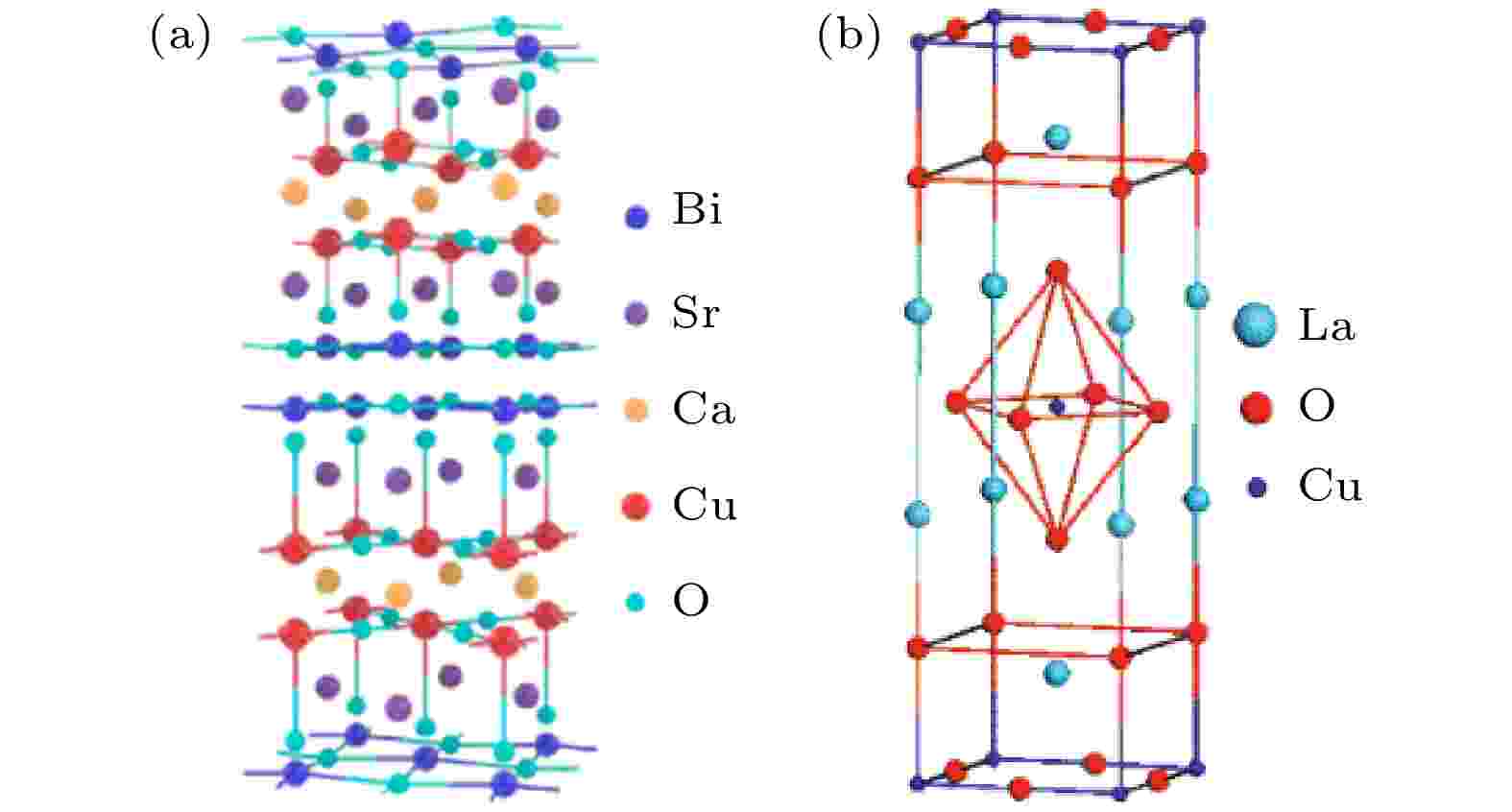
2022, 71 (18): 187401.
doi: 10.7498/aps.71.20220638
Abstract +
Superconductivity has become a fascinating research field in condensed matter physics since its discovery in 1911. Nowadays, two-dimensional materials exhibit a variety of new physical phenomena, such as Ising superconductivity, topological superconductivity, and unconventional superconductivity. A number of two-dimensional van der Waals crystals exhibit superconductivity, which provide us with a broad research platform for exploring various physical effects and novel phenomena. In this review, we focus our attention on superconducting properties of two-dimensional van der Waals crystals, and highlight the recent progress of the state-of-the-art research on synthesis, characterization, and isolation of single and few layer nanosheets and the assembly of two-dimensional van der Waals superconductors. Finally we conclude the future research directions and prospects in two-dimensional materials with superconductivity.

2022, 71 (18): 188101.
doi: 10.7498/aps.71.20220895
Abstract +
Delocalized p-shell electron magnetism emerging in a low-dimensional graphene system due to quantum effect is distinct from the localized d/f-shell electron’s. The delocalization effect allows the precise engineering of the magnetic ground state and magnetic exchange interactions in nanographenes, thus implementing the accurate construction of high-quality graphene-based magnetic quantum materials. In recent years, with the development of surface chemistry and surface physics, it has become feasible to study the magnetism of nanographenes with single-atom precision, thus opening a new research direction for studying purely organic quantum magnetism. This review starts from the summarizing of the research background of nanographene magnetism. Then, the physics nature behind the nanographene magnetism and recent experimental researches are discussed. Finally, the challenges and opportunities for further studying low-dimensional magnetic graphenes are briefly discussed.
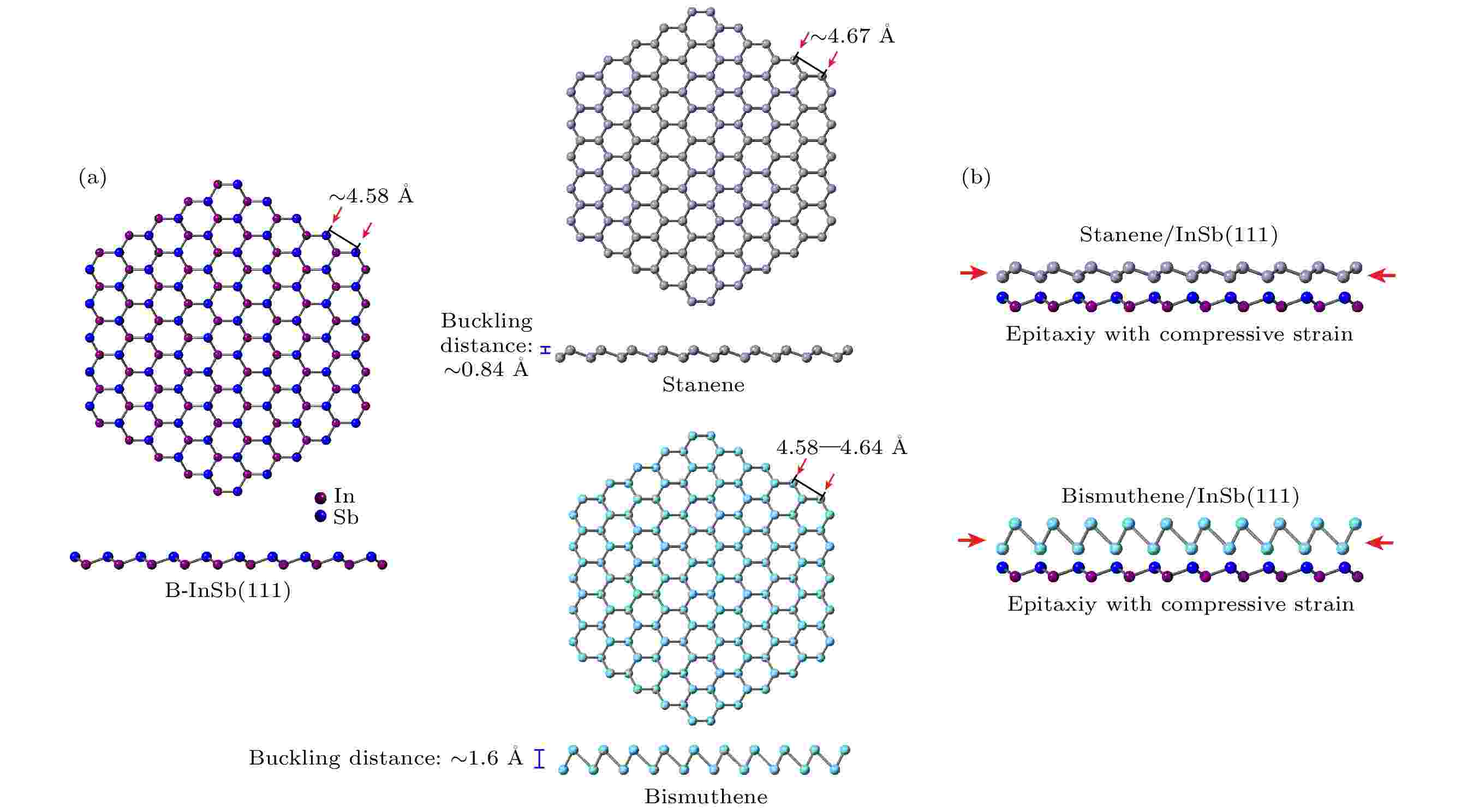
COVER ARTICLE
2022, 71 (18): 186401.
doi: 10.7498/aps.71.20221024
Abstract +
Two-dimensional topological insulator (2DTI) with a large bandgap is prerequisite for potentially observing quantum spin Hall and other quantum phenomena at room-temperature. At present, the synthesis of such materials possesses formidable challenge. In this work, we report our experimental results on synthesis of large-gap 2DTI stanene and bismuthene on B-faced InSb(111) substrate by using molecular beam epitaxy technology. We find that both the stanene and bismuthene can be synthesized by following the forming of a wetting layer on InSb(111) substrate, but with different prospects. On the one hand, it is found that the binding energy between Sn and the substrate is not strong enough to compete the binding force between Sn atoms during the post annealing, thus resulting in a wetting layer composed of many small domains. It significantly restricts the quality of the stanene epilayers. On the other hand, the Bi atoms on InSb(111) are found more stable than the Sn atoms on InSb(111), resulting in a uniform wetting layer which can be optimized by adjusting substrate temperature and post-annealing conditions. Large size and single crystal bismuthene domains have been observed under the STM measurement, which also indicates a bulk gap of ~0.15 eV and metallic edge states.
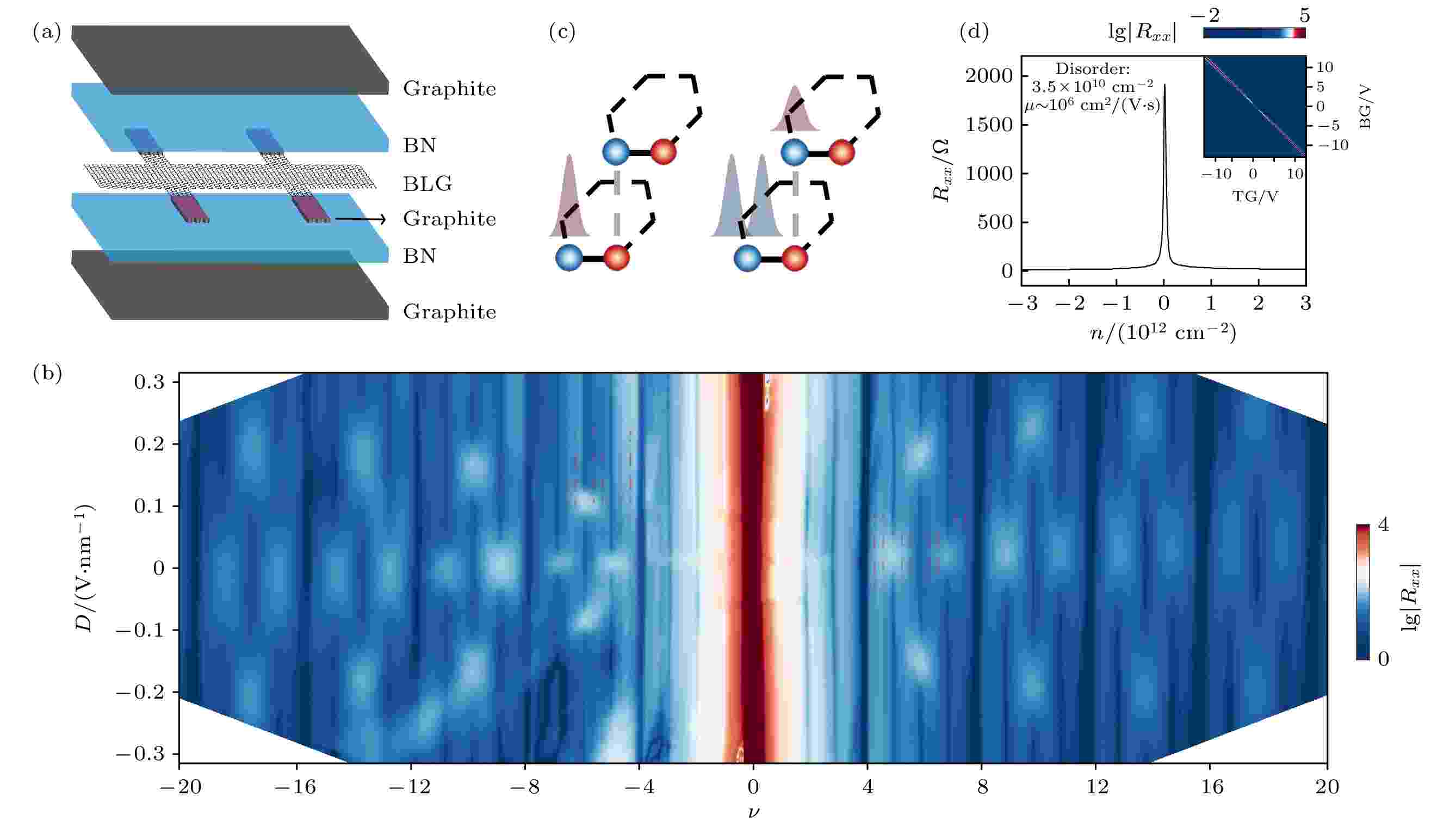
2022, 71 (18): 187202.
doi: 10.7498/aps.71.20220905
Abstract +
At a half-filled Landau level, composite fermions with chiral p-wave pairing will form a Moore-Read state which hosts charge-e/4 fractional excitation. This excitation supports non-Abelian statistics and has potential to enable topological quantum computation. Owing to the SU(4) symmetry of electron and electric-field tunability, the bilayer graphene becomes an ideal platform for exploring physics of multi-component quantum Hall state and is candidate for realizing non-Abelian statistics. In this work, high-quality bilayer graphene/hBN heterostructure is fabricated by using dry-transfer technique, and electric transport measurement is performed to study quantum Hall state behavior in bilayer graphene under electric field and magnetic field. Under strong magnetic field, the sequences of incompressible state with quantized Hall conductivity are revealed at –5/2, –1/2, 3/2 filling of Landau level. The feature of even-denominator quantum Hall state is more visible then weaker with increasing magnetic field, and this corresponds to the polarization of Landau level wave function. The experimental results indicate that the observed even-denominator fractional quantum Hall state belongs to the topological phase described by Pfaffian wavefunction.
GENERAL

2022, 71 (18): 180201.
doi: 10.7498/aps.71.20220726
Abstract +
Rumors in social networks are often referred to as infectious diseases of the Internet, because rumors spreading in networks feature strong concealment, fast transmission speed and wide spread. With the development of mobile devices, online rumors nowadays are far more harmful than before. Rumors in social networks show completely different spatiotemporal dynamics from traditional rumor spreading dynamics. A social network rumor spreading model with considering both reaction diffusion and fermentation time delay is proposed in this paper. The effects of spatial diffusion and time delay on rumor spreading in online social networks are studied. Firstly, the existence of equilibrium point of the reaction-diffusion rumor spreading model is analyzed, and the basic regeneration number $R_{0}$ is calculated. When $R_{0} < 1$ , the rumor stops spreading and disappears in social networks; when $R_{0}>1$ , the rumor persists in social networks. Secondly, the local stability of the rumor spreading equilibrium is investigated by using the Roth-Hurwitz stability criterion, and the influence of diffusion on the system stability is discussed. When the diffusion is introduced into a stable rumor spreading model without time delay, the model becomes unstable, indicating that the Turing instability is caused by diffusion. Thirdly, the Hopf bifurcation condition of the rumor spreading model is established by selecting the time delay τ as the bifurcation parameter, and the expression of bifurcation threshold $\tau_{0}$ is given. When $\tau < \tau_{0}$ , the rumor propagation model with diffusion term is stable; when $\tau>\tau_{0}$ , the model loses the stability and the Hopf bifurcation occurs. The numerical simulation results show that both diffusion and time delay play an important role in the dynamic evolution of rumor spreading. At the same time, the influence of the crowding degree of spreaders on rumor propagation is also simulated. As the crowding gets worse and worse, the rumor refuting effect weakens, the bifurcation threshold $\tau_{0}$ decreases, and the propagation peak increases. Therefore, it is important to build an excellent social network environment to supervise the rumors that are still in the fermentation stage, improve the timeliness of the release of rumor refuting information, and strengthen the refuting of rumors among key groups. This paper breaks through the limitation considering only the time evolution, explores the spatiotemporal spreading law of rumor in real society, and provides a new perspective and idea for governing the rumor spreading.

2022, 71 (18): 180301.
doi: 10.7498/aps.71.20220491
Abstract +
Based on the generalized Lorenz Mie theory, the propagation and scattering properties of a uniaxial anisotropic spherical particle illuminated separately by double zero-order Bessel beam with arbitrary propagation direction and polarization direction are studied. The propagation and scattering characteristics are compared with those of a uniaxial anisotropic spherical particle illuminated by a single zero-order Bessel beam. Using the orthogonal relation of the spherical vector wave function and coordinate rotation theorem, the expanded forms of double zero-order Bessel beams with arbitrary propagation direction and polarization direction are derived. The analytical expressions of the expansion coefficients are derived by the integral method. The expansion coefficients of total incident field are obtained through the vector superposition principle. Based on the Fourier transform and tangentially continuous boundary conditions, the internal electromagnetic field of the uniaxial anisotropic sphere is expanded in terms of the spherical vector wave function and the scattering coefficients are derived. By comparing the angular distribution of the radar cross section of the particle illuminated by single and double zero-order Bessel beam when degenerating into plane waves with those results given by the literature, the correctness of the theory and the program in this paper are both verified. The effects of the incidence angle, conic angle and polarization angle on angle distribution of the radar cross section are numerically analyzed. The theoretical and numerical results in this paper are expected to be used to study the scattering properties, particle size analysis and optical trapping for anisotropic particles, biological cells and other particles illuminated by multi-beams.

2022, 71 (18): 180701.
doi: 10.7498/aps.71.20220185
Abstract +

2022, 71 (18): 180702.
doi: 10.7498/aps.71.20220955
Abstract +
THE PHYSICS OF ELEMENTARY PARTICLES AND FIELDS

EDITOR'S SUGGESTION
2022, 71 (18): 181101.
doi: 10.7498/aps.71.20220475
Abstract +
By constructing the spatial distribution of external potential and incoherent pumping, a $ {\cal{PT}} $ symmetrical model satisfied by the one-dimensional incoherent pumped exciton-polariton condensate system is designed. In the weakly nonlinear case, the $ {\cal{PT}} $ symmetrical phase transition point is found, and the linear spectrum is shown. In the normal nonlinear case, found are the bright soliton with the zero background, the multi-poles dark solitons with zero background, the symmetry breaking dark solitons and symmetrical dark soliton with the homogeneous background, and the dip- and hump-type dark solitons with the homogeneous background, and discussed are the effects of inhomogeneous pumping and the imaginary part of external potential on the profiles and the stability of solitons. Through these results, the competition between $ {\cal{PT}} $ symmetrical potential and the inhomogeneous pumping is understood, the scheme that how the bright and dark solitons are excited is presented, and the existence and stability regions of these solitons are determined. Finally, the symmetry breaking dark solitons are controlled by modulating the imaginary part of the $ {\cal{PT}} $ symmetrical potential, which reveals the potential applications of the polariton condensate system in optical information processing, such as the all-optical switches.
ATOMIC AND MOLECULAR PHYSICS

2022, 71 (18): 183202.
doi: 10.7498/aps.71.20212213
Abstract +
Tunneling ionization of atoms is the basis of many phenomena and techniques, which requires people to be able to comprehensively understand this crucial physical process. Recent experiments have demonstrated the existence of the nonzero initial longitudinal momentum spread at the tunnel exit. However, the initial longitudinal velocity is usually set to be zero in the adiabatic regime. In this work, we numerically study that the initial longitudinal velocity of ionized-out electrons plays the role in the spiderlike photoelectron momentum distributions in hydrogen atom by using the semiclassical rescattering model and the time-dependent Schrödinger equation. Nonzero longitudinal initial velocity, no matter whether it is an offset or an offset distribution, is considered in the semiclassical rescattering model. Longitudinal cut-plot and transverse cut-plot of the photoelectron momentum distribution are discussed. The final longitudinal momentum of the electron is found to be sensitive to the initial longitudinal velocity, which offers us a method of determining the information about the initial longitudinal velocity from a photoelectron momentum distribution according to this linear relationship. We unveil that either an offset or an offset distribution for the initial longitudinal velocity can perfectly reproduce the same spiderlike photoelectron momentum distributions. The semiclassical results are backed by the full quantum simulation. It is expected that more precise research is required to deepen the knowledge of the initial longitudinal velocity in strong field ionization of atoms.
ELECTROMAGNETISM, OPTICS, ACOUSTICS, HEAT TRANSFER, CLASSICAL MECHANICS, AND FLUID DYNAMICS
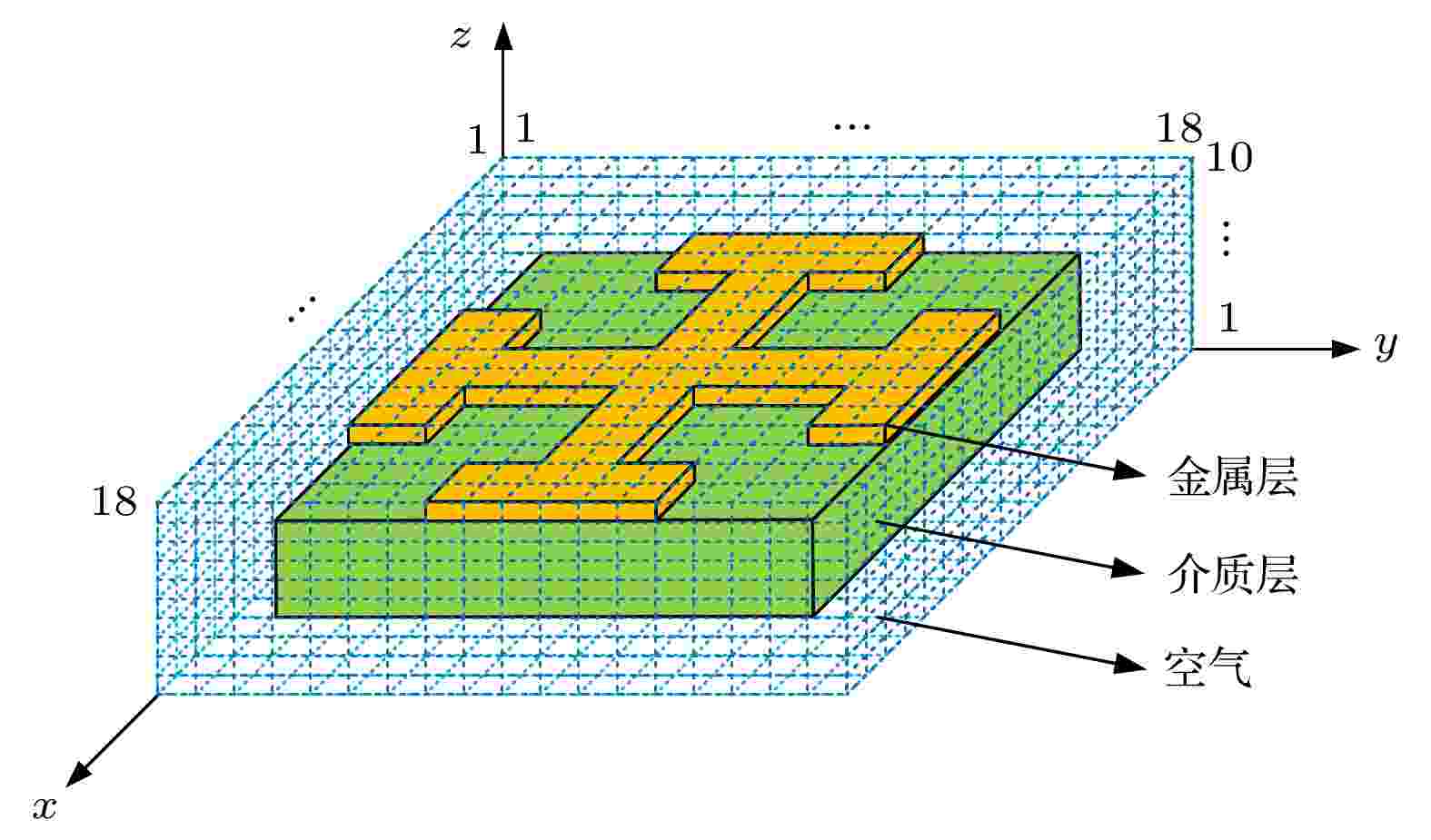
2022, 71 (18): 184101.
doi: 10.7498/aps.71.20220695
Abstract +
The hybrid implicit-explicit finite-difference time-domain (HIE-FDTD) method is a weakly conditionally stable finite-difference time-domain (FDTD) method. The time step size of the HIE-FDTD method is only confined by the two coarse spatial cell sizes, so it is widely used in the simulation of electromagnetic targets with fine structures along one direction. In this work, the basic iterative formulations of the HIE-FDTD method are proposed by approximating the formulations of the FDTD method. In these formulations, the iterative coefficients are marked with spatial grid numbers. Therefore, the coefficients can be calculated automatically according to the medium parameters of the spatial cells by indexing the grid numbers. Since the triangular matrix which is used to calculate the electric field is based on the iterative coefficients, the triangular matrix can also be updated automatically. In addition, a method to reduce the number of tridiagonal matrices is proposed in this work, which can effectively reduce the calculation memory and improve the calculation efficiency. In the proposed HIE-FDTD method, equivalent parameters are employed at the interfaces of different media and the convolution perfectly matched layer boundary condition is used to truncate the computational region. Based on the proposed HIE-FDTD method, a series of programs are implemented, which can simulate arbitrary electromagnetic targets with fine structure in one dimension in linear and non-dispersive space. A dielectric plate irradiated by planar wave and a dual-frequency microstrip inverted F antenna are simulated by using these programs. The numerical results are in good agreement with those from the traditional FDTD method and CST software, and the computational efficiency of the proposed HIE-FDTD method is greatly improved in comparison with that of the traditional FDTD method. This study provides a reliable simulation tool for the wide application of the HIE-FDTD method.

EDITOR'S SUGGESTION
2022, 71 (18): 184201.
doi: 10.7498/aps.71.20220665
Abstract +
Wave absorbing materials are widely used to prevent military equipment from being detected by radar wave and also serve as civil electromagnetic shielding. The absorbing properties of wave absorbing materials are determined by a combination of the electromagnetic parameters and the thickness of the composite material. In the actual case, the theoretically designed reflection loss peak intensity and the bandwidth of wave absorbing materials deviate from the engineered values. There are few reports on the mechanism about the variation of the intensity of the reflection loss absorption peak with thickness and the bandwidth of the reflection loss absorption peak. In this work, based on an interfacial reflection model, the reflective properties of radar wave at the air interface of the absorbing coating are investigated. The dependence of the matching impedance on the matching thickness of the absorbing material is determined, and the matching impedance parameters are further used to design the absorbing composites, which exhibit excellent microwave absorption properties, i.e. an average value of reflection loss is below –10 dB at 4–18 GHz in different thickness wave absorbing materials, and an average value of reflection loss is below –20 dB at 6–18 GHz in different thickness wave absorbing materials. The bandwidth of the reflection loss peak at the matched thickness is discussed in depth in principle based on the interface reflection model, and the theoretical calculations accord with the experimental results.

EDITOR'S SUGGESTION
2022, 71 (18): 184202.
doi: 10.7498/aps.71.20220506
Abstract +
Owing to the potential applications in all-optical quantum information processing and quantum optical networks, magnet-free optical non-reciprocity transmission has attracted great interest and has been studied in many fields, such as parity-time-symmetry enhanced nonlinearity, optomechanical systems, photonic crystal, cold atomic Bragg lattices, chiral quantum optics, and hot atoms. In particular, the random thermal motion of hot atoms can be a useful resource to realize optical non-reciprocity. Here in this work, based on the susceptibility-momentum-locking of atomic thermal motion and the strong coupling characteristics of cavities, a magnetic-free optical reciprocity-nonreciprocity transmission conversion scheme is designed and realized through the atom-cavity compound system. Theoretical and experimental analysis show that the coupling field conditions determine the nonreciprocity of the system. Under the action of single traveling-wave field, the nonreciprocity in hot atoms depends on the propagation direction of the coupling field due to the Doppler effect. Therefore, by changing the opening and closing of the opposite coupling field, the two-way single channel optical nonreciprocal transmission based on intracavity electromagnetically induced transparency can be controlled. When the two coupling fields propagate simultaneously in the opposite directions, however, the cavity transmission changes from single-dark-state to double-dark-state peaks, in which the reciprocity outputs depend on the frequency difference between the two coupling fields. By tuning the frequency difference, the two-way multi-channel reciprocal-nonreciprocal transmission regulation based on double dark polar peaks can be realized. The study can be applied to all-optical quantum devices and quantum information processing, such as optical transistors, optical switching and routing, and quantum gate manipulation.
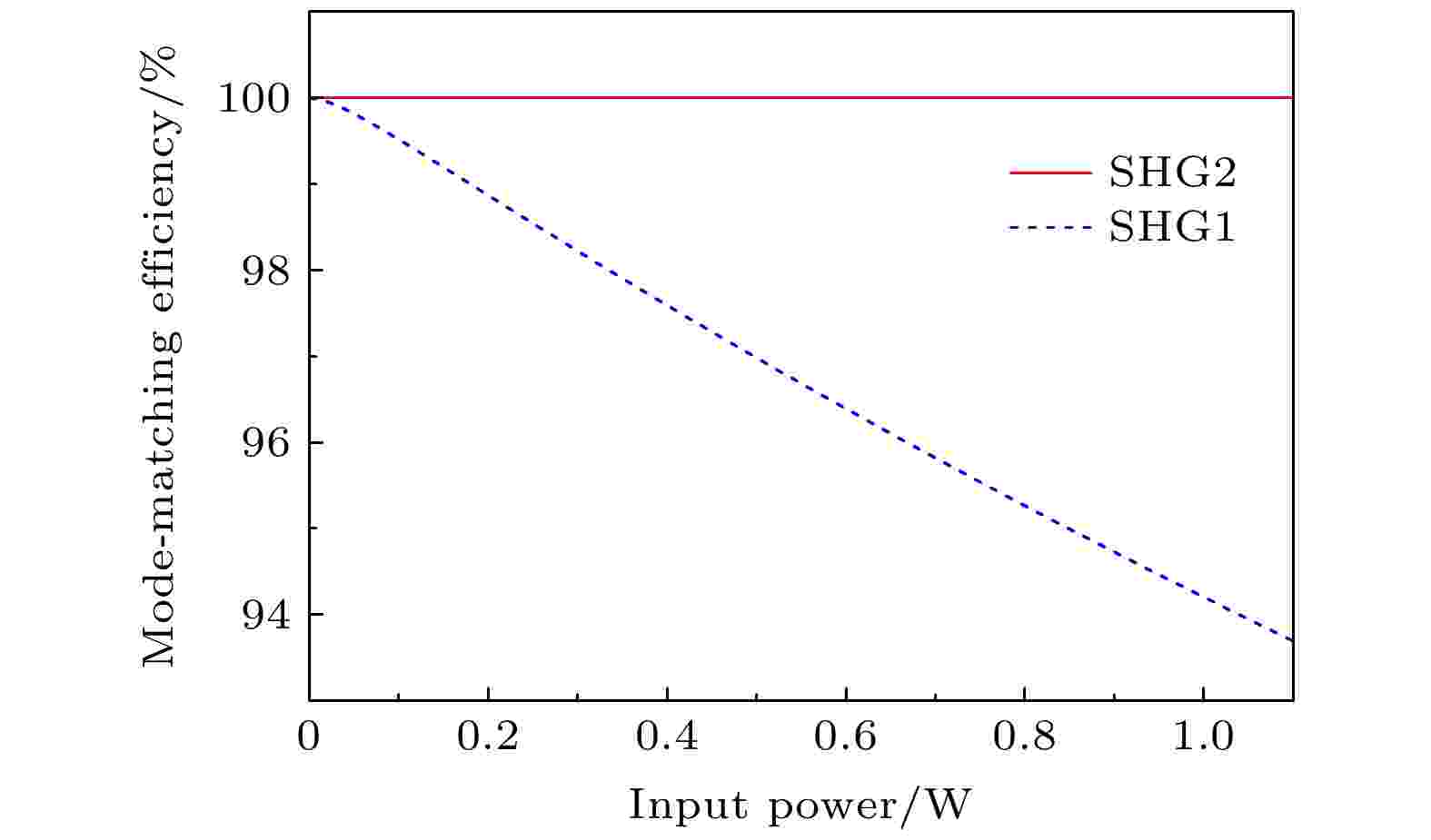
EDITOR'S SUGGESTION
2022, 71 (18): 184203.
doi: 10.7498/aps.71.20220575
Abstract +
Second harmonic generation (SHG) is an effective way to generate short wavelength laser with high power. The SHG is accompanied with the absorptions of fundamental waves and harmonic waves, which converts a fraction of the two waves deposit energy into heat, causing a temperature gradient along the radial direction of the periodically poled potassium titanyl phosphate (PPKTP) crystal. The inhomogeneous temperature distribution causes thermal lensing in the crystal. The thermal lensing effect will deform the spatial mode of the SHG cavity and result in the mode-mismatching of the fundamental wave to the SHG cavity, and therefore the conversion efficiency of SHG process is reduced. Moreover, with the increase of injected fundamental wave power, the influence caused by thermal lens becomes more and more serious. In order to obtain a high-efficiency frequency conversion, it is necessary to take the measure to minimize the effect caused by thermal lensing. In this paper, we report on a high efficiency generation of green laser at 532 nm by external cavity SHG process with a semi-monolithic standing cavity. The influences of thermal lens effect on the optimal conversion efficiency in different semi-monolithic cavities are theoretically analyzed. The variations of conversion efficiency with the pump power in “plane-concave” semi-monolithic cavity based on parallel crystal and also in “concave-concave” semi-monolithic cavity based on concave crystal are quantitatively analyzed. In experiments, two types of cavity structures are built to measure the variation of frequency doubling conversion efficiency with pump power. For the “plane-concave” semi-monolithic cavity, the maximum green laser power of 747 mW is obtained and the corresponding conversion efficiency reaches 93.4%±3%, with 800 mW infrared laser injected. For the “concave-concave” semi-monolithic cavity, the maximum green laser power of 529 mW is obtained and the corresponding conversion efficiency is 88.2% ± 3%, with 600 mW infrared laser injected. The results show that the thermal lens affects the optimal conversion efficiency more seriously in “concave-concave” semi-monolithic cavity than in “plane-concave” semi-monolithic cavity. Furthermore, the influence of thermal lens effect turns higher and higher with the increase of the loss in the cavity. It is obvious that the “plane-concave” semi-monolithic cavity is more suitable for the SHG process and has many potential applications in quantum optics and cold atom physics and provides a guidance for future research on high-efficiency SHG process.
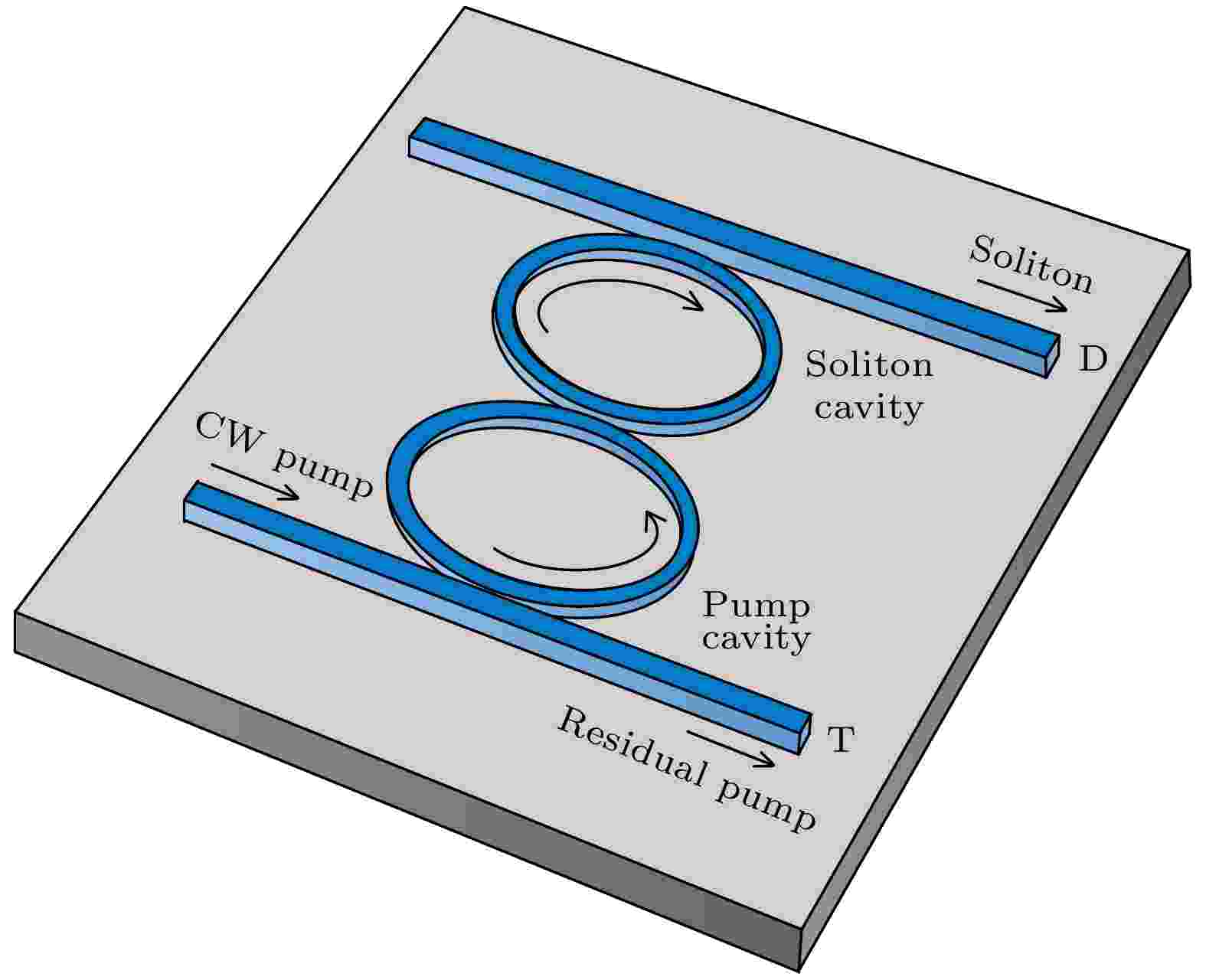
2022, 71 (18): 184204.
doi: 10.7498/aps.71.20220691
Abstract +
We investigate the stability and nonlinear dynamics of the Kerr optical frequency comb inside a dual coupled microcavity with high-order dispersion effect based on the theoretical model of coupled nonlinear Schrödinger equation. The effects of different high-order dispersion parameters on the evolution and spectral characteristics of the optical field in the cavity are also explored. Theoretical results indicate that the addition of the third-order dispersion enlarges the stability domain of the parametric space and transforms the periodically varying soliton breathers and chaos into stable bright soliton. In order to obtain an accurate Kerr optical frequency comb spectral envelope, higher-order dispersion should be considered. Moreover, high-order dispersion terms have a significant effect on the spectral characteristics of the optical frequency comb, such as the spectral envelope frequency shift and the dispersive wave spectral position. Specifically, the third-order dispersion and positive fourth-order dispersion can broaden the spectrum and enhance the dispersive waves; while the negative fourth-order dispersion can suppress the dispersive wave generation and obtain a symmetric soliton frequency comb; the fifth-order dispersion can regulate the drift direction and speed of the optical solitons. The theoretical results are of great value for dispersion regulation and design and also for stability studies in double-coupled microcavity experiments.
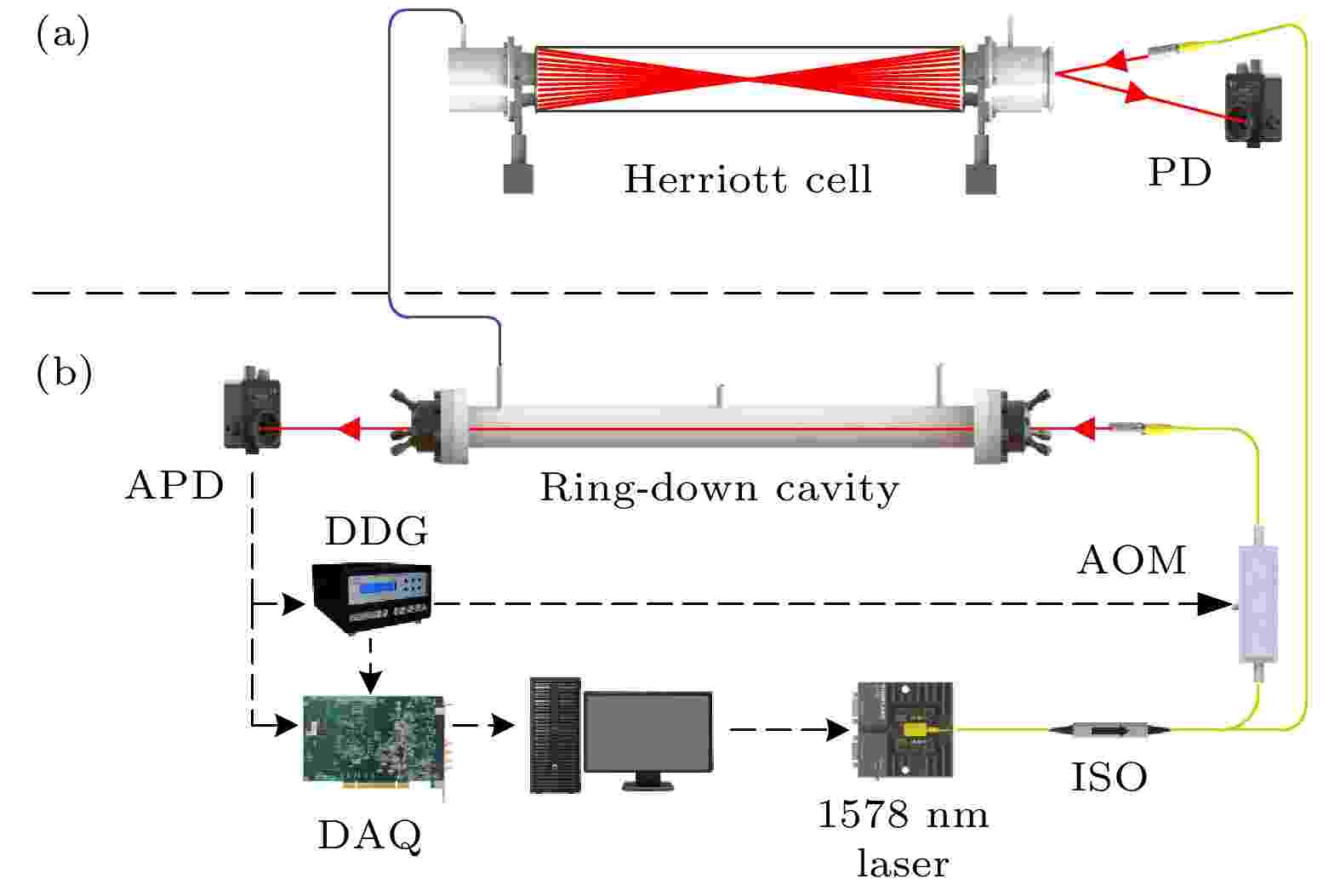
2022, 71 (18): 184205.
doi: 10.7498/aps.71.20220742
Abstract +
Combining cavity ring down spectroscopy (CRDS) and wavelength modulated direct absorption spectroscopy (WM-DAS), a wide range and calibration-free gas concentration detection method is established, which has the advantages of high signal-to-noise ratio of CRDS and fast speed and measurable absolute concentration of WM-DAS. The baseline ring down time (τ0) can be calculated by measuring the absorptivity (WM-DAS) and ring down time (CRDS) at the central frequency of the spectral line, without real-time calibration, which greatly improves the speed of CRDS measurement. The measurement results of different H2S concentrations at 6336.617 cm–1 at room temperature and atmospheric pressure show that the dynamic measurement range of this method can be extended to more than 4 orders of magnitude, the measurement accuracy is improved in comparison with WM-DAS, and the detection limit can reach 1 × 10–9 in 40 s.
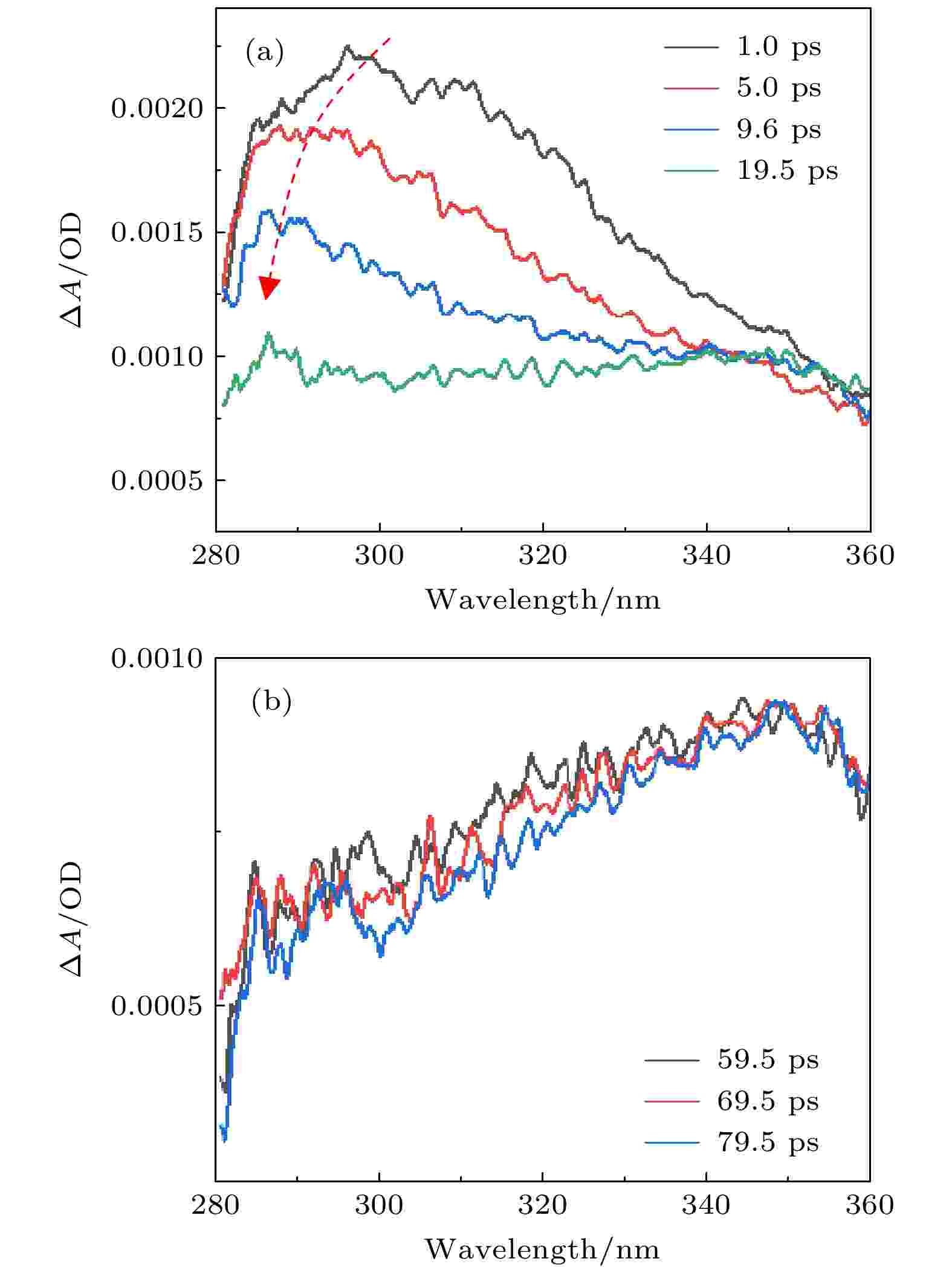
Solvent effect on ultrafast decay of uracil studied by femtosecond transient absorption spectroscopy
2022, 71 (18): 184206.
doi: 10.7498/aps.71.20220515
Abstract +
As one of the building blocks in RNA chain, uracil and its derivatives have attracted a great deal of interest since its ultrafast dynamics is closely related to mutagenic and carcinogenic effects. In this study, the solvent effect on the ultrafast decay of excited uracil is studied by femtosecond transient absorption spectroscopy in the UV region. The uracil molecule is populated to the 1(π, π*) state (i.e. S2 state) with a pump pulse at 264 nm. Broad-band white light continuum in the UV region from 280 to 360 nm is used as the probe. With a detail analysis of the measured transient spectra, two decay time constants, i.e. 9.8 ps and > 1000 ps, are directly obtained at 300 nm in the solvent of acetonitrile. Compared with our previous experiments, where no obvious triplet population is observed in water, triplet population is found to play an important role in acetonitrile. A comparison of excited-state dynamics among different solvents is also carried out. It reveals that the decay from the 1(n, π*) state (i.e., S1 state) to the T1 state shows a clear dependence on the H bonding of the solvents. With stronger H bonding, the 1(n, π*) excited state decays faster and has less chance to transfer to the triplet state. These results suggest that only when the 1(n, π*) state has excess vibrational energy can it transit to the triplet state through the intersystem crossing process. With this new information obtained in the present measurement, the decay dynamics of uracil on the S2 excited state can be further understood.

2022, 71 (18): 184207.
doi: 10.7498/aps.71.20220536
Abstract +
Optical diffractive neural network (ODNN) uses light wave as a computing medium to perform the inference and prediction function of neural network, which has the advantages of high speed, low power consumption, and parallel processing. In this work, an ODNN with only three layers of phase modulation is designed, and a method to improve the recognition performance of ODNN based on the first-order spectral distribution of targets is proposed. Using this method, the parameters of a three-layer ODNN are effectively optimized and the optimal pixel size, diffraction distance, and method for image preprocessing are obtained. The three-layer ODNN designed in this work has a recognition accuracy rate of 95.3% for MNIST (handwritten digit set), compared with the 91.75% accuracy achieved by the five-layer ODNN in the reference (Lin X, Rivenson Y, Yardimci N T, Veli M, Luo Y, Jarrahi M, Ozcan A 2018 Science 361 1004 ). In addition, the system volume is greatly reduced and the system structure is simplified. Combined with the advantages of high speed and low power consumption, it has huge potential applications in the fields such as edge computing in the future.

2022, 71 (18): 184208.
doi: 10.7498/aps.71.20220894
Abstract +
In order to analyze the causes of star sensor performance degradation and attitude measurement accuracy reduction in space radiation environment, the total ionizing dose effects on complementary metal oxide semiconductor (CMOS) star sensor performance are studied. By using an established outfield star sensor test system, the Orion Nebula and the zenith direction of the sky are imaged. Through the experimental processes of star map data acquisition, star point extraction and star map matching, the influence mechanisms of complementary metal oxide semiconductor active pixel sensor (CMOS APS) noises on background gray mean value of star map and number of identified stars are analyzed. A recognition algorithm for finding stars annihilated by radiated noise is proposed. Through theoretical derivation, the quantitative relationships between CMOS APS dark current noise, dark signal non-uniformity noise and photon response non-uniformity noise and star centroid positioning error are established. The γ radiation results show that the image gray-mean of the whole star map increases, the number of identified stars decreases, and the star point centroid positioning accuracy decreases, which seriously affect star map recognition of star sensor. This research provides a theoretical basis for the radiation-resistant reinforcement design of high precision star sensors.

2022, 71 (18): 184301.
doi: 10.7498/aps.71.20220746
Abstract +
Passive sonar limits the ability to sample vertical scale spatiotemporally, and the received signal is indistinct by noise, resulting in the performance degradation or even failure of the source depth estimation method in deep ocean bottom bounce area. When vertical line array is arranged near the sea surface to locate the source by matched-field processing in bottom bounce area, there is great ambiguity in depth dimension. In this work, the problem of source depth estimation in bottom bounce area is addressed. The peak stripe of angle-range interference pattern is modeled and analyzed based on the ray theory, and a source depth estimation method is proposed, which comprises two parts: estimating sound source depth by utilizing peak stripe fluctuation characteristic combined with spatial spectrum analysis, and reconstructing interference pattern using principal component analysis. The flowchart of the method is listed as follows. Firstly, the spatial spectrum corresponding to each range is spliced to obtain the original angle-range interference pattern. Secondly, the original interference pattern is denoised by principal component analysis to obtain the reconstructed interference structure. Finally, the fluctuation period of peak fringes is extracted from the reconstructed interference pattern to calculate the source depth. Under the low signal-to-noise ratio (SNR) condition, the peak stripe destroyed by noise will reappear in the reconstructed interference pattern and the estimation result of sound source depth will be more accurate, making the source depth estimation method suitable for bottom bounce area. The method combines the space-time cumulative gain of the array and the low-rank characteristic of the interference pattern. The simulation results obtained by Bellhop indicate that the fluctuation period of peak stripe depends on the depth and frequency of the source, which is consistent with the modeling result, and the source depth can be estimated precisely by spatial Fourier transform. The simulation results also show that the rank of the interference pattern is very low and the peak stripe can be composed of a few principal components. Monte Carlo experimental results indicate that the estimated results of the source depth by using reconstructed interference pattern are more accurate than those without using principal component analysis at low SNR condition. The proposed method can achieve more than 80% accuracy at –3 dB SNR.
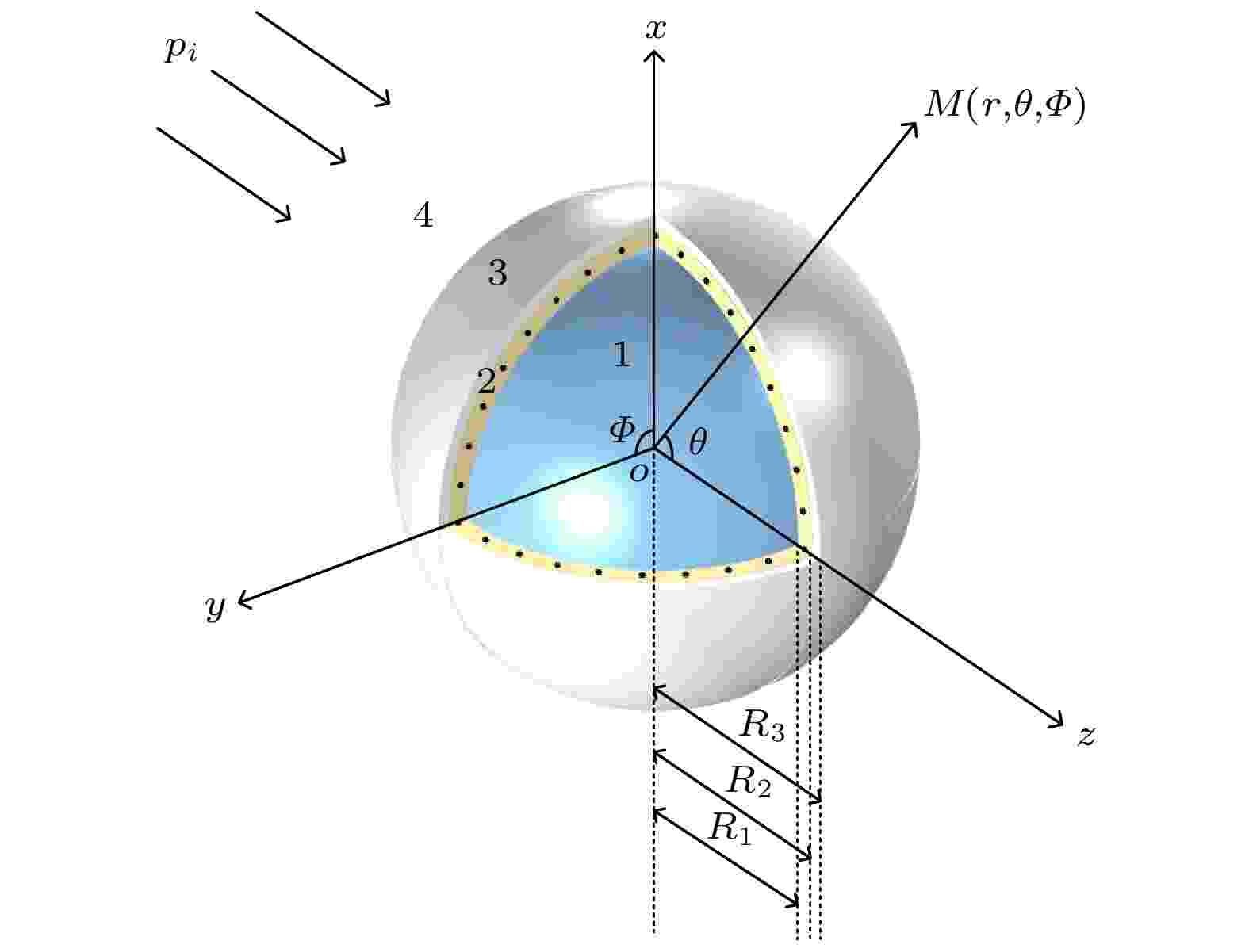
2022, 71 (18): 184302.
doi: 10.7498/aps.71.20220847
Abstract +
Normal ultrasound contrast agents (UCAs) loaded with magnetic nanoparticles are called magnetic microbubbles (MMBs), which can be used in multimodal imaging, thrombolytic therapy, and targeted drug delivery. The MMBs are often studied by in situ measurement techniques, however scattering model is the basis of inversion techniques. Therefore, we develop a scattering model of multilayer structured MMBs with magnetic fluid inner layer and phospholipid outer layer, in which outer layer’s viscoelasticity and the effect of nanoparticles on inner layer’s density are considered, while scattered sound fields in each region are obtained by solving normal series. The MMB model is compared with other bubbles, and its acoustic scattering characteristics are analyzed numarically, including the effects of radius, magnetic nanoparticle volume fraction, inner layer thickness and outer layer characteristics parameters. The results show that when the volume fraction α of magnetic nanoparticles in the inner layer does not exceed 0.1, magnetic nanoparticles have a two-sided effect on resonant scattering of MMBs, depending mainly on its radius, and the bubble has a critical radius value. If the radius of MMBs exceeds this critical value, the particles will enhance scattering, on the contrary, if the radius of MMBs is smaller than this critical value, the particles will reduce scattering; for a given microbubble radius, when α is not more than 0.1, the larger the α value, the stronger the resonant scattering of MMBs will be; the smaller the thickness of the inner film layer and outer film layer or the Larmé constant, the stronger the scattering will be. This study provides a theoretical guidance for the optimal structural design of MMBs and its in situ monitoring and therapeutic applications.

2022, 71 (18): 184501.
doi: 10.7498/aps.71.20220329
Abstract +
Dry granular materials are composed of a dense random packing of macroscopic grains. As a small amount of liquid is added to granular samples, the liquid bridge forces, i.e. the forces between liquid and the grains, have an influence on the mechanical properties of wet granular material, and some of these properties are quite different from those of dry granular materials. In this work, by measuring the acceleration of the sample chamber and the force exerted on it by the shaker, the variations of bulk modulus and energy dissipation of both dry and wet glass bead samples with pressure and viscosity under vertical vibration are studied. The results are shown below. 1) Under low saturation, the bulk modulus of dry and wet glass bead sample are both described by a power law scaling law with pressure, which is close to the power law relationship predicted by the efficient medium theory on the basis of Hertz contact potential. A small amount of liquid can increase the bulk modulus of glass bead sample. At the same pressure and liquid content, the bulk modulus of wet glass bead sample increases with liquid viscosity increasing. Based on Hertzian contact mechanics, an efficient elastic network model is proposed to illustrate the mechanism of increasing bulk modulus of wet glass bead samples. 2) The energy dissipation of dry and wet glass bead sample decrease following the power law of pressure, and the energy dissipation of wet glass bead samples is proportional to the kinematic viscosity of liquid. 3) With the increase of strain amplitude, the softening behavior of the wet glass bead sample is similar to that of the dry glass bead sample, when the strain amplitude is higher than the strain threshold value. The kinematic viscosity of liquid inhibits the softening behavior of glass bead sample.
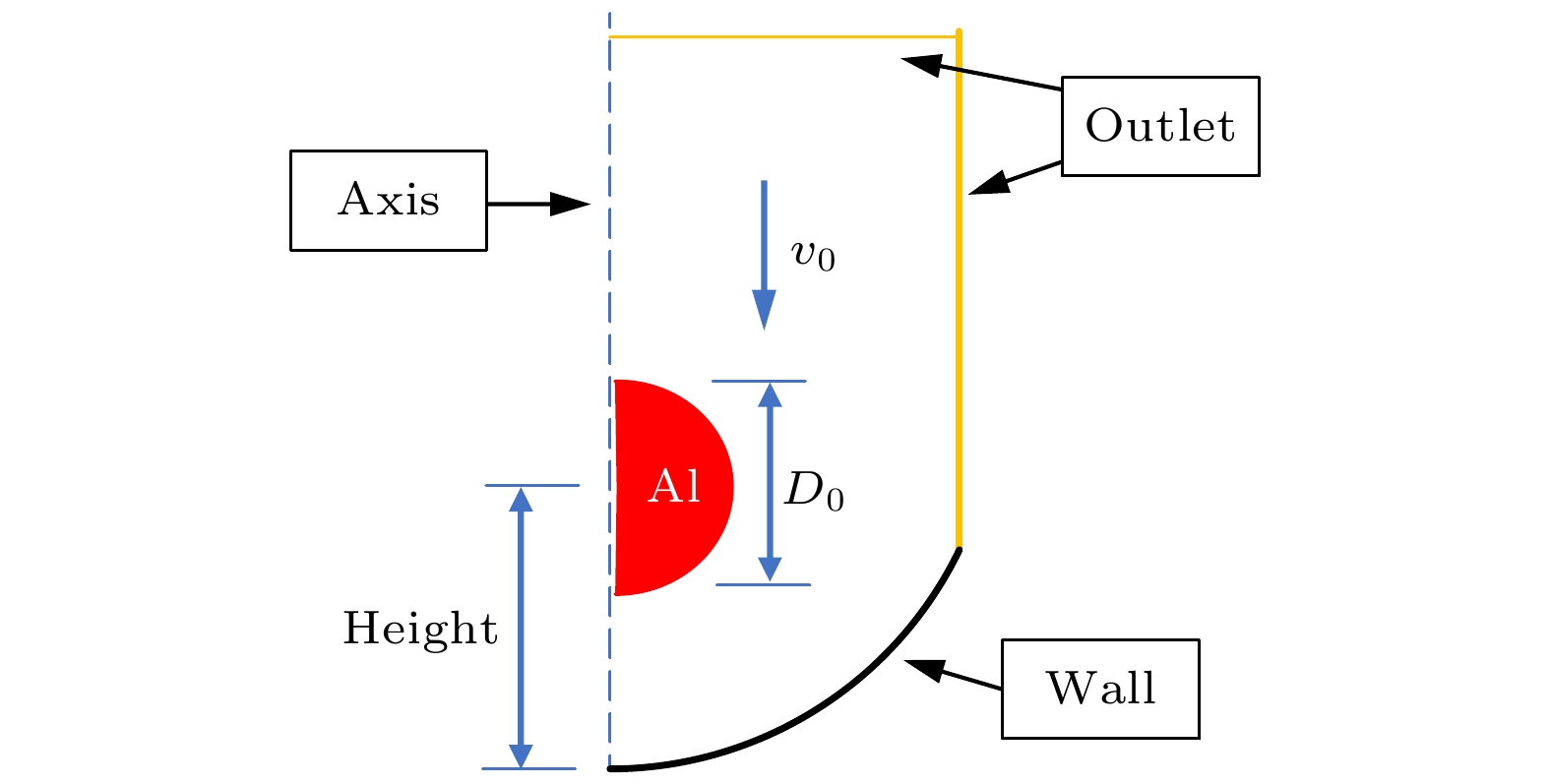
2022, 71 (18): 184701.
doi: 10.7498/aps.71.20220442
Abstract +
In order to reveal the mechanism of reaction between aluminum droplet and curved wall, a numerical calculation model based on the volume of fluid method of aluminum droplet impacting curved wall is established. By analyzing the influence law of Weber number, Ohnesorge number and wall curvature on the process of droplet impacting the wall, the spreading characteristics and flow mechanism of droplet on curved surface are studied. The results show that the flow characteristics of aluminum droplets after impacting the wall are affected not only by inertial force, surface tension, and viscous force, but also by the structure of the wall. The behavior patterns of the droplets contain adhesion, rebound and splash under different Weber numbers. Because energy dissipation is produced in both spreading process and retracting process, the retracting speed of droplet is always less than its spreading speed. During the flow of the droplet, there are two pressure peaks and velocity peaks at the contact point, while the two peaks appear respectively at the moment when the droplet impacts the wall and when the droplet is about to rebound. In the behavioral mode of rebound, as Ohnesorge number increases, the maximum spreading diameter of the droplet gradually decreases, and the contact time is shorter. In the behavioral mode of adhesion, the spreading radius of the droplets is of oscillatory decay. Within the same period, the maximum spreading coefficient of the larger-Ohnesorge number droplets is smaller, and the decay rate is faster and the oscillation period is shorter. With the increase of wall curvature, the maximum spreading coefficient of droplet increases and that on the plane is the minimum. Based on the calculation results, the empirical formula is revised. Compared with the previous formula, it can well predict the maximum spreading coefficient on the curved surface, whose average error is within 3%. Further, according to the conservation of energy, theoretical models which predict the maximum spreading coefficients when droplets impact a curved and plate wall are also established. Compared with the scenario on the plane, the spreading coefficient of droplet on the curved surface is related to not only the motion parameters of droplet and the wettability of wall surface, but also the ratio of wall curvature to droplet curvature. More importantly, the new theoretical model takes into account the coupling effects of Weber number, Reynolds number, curvature ratio and contact angle, so it has stronger applicability and better robustness. The research results in this work will provide the theoretical basis for practical engineering application.
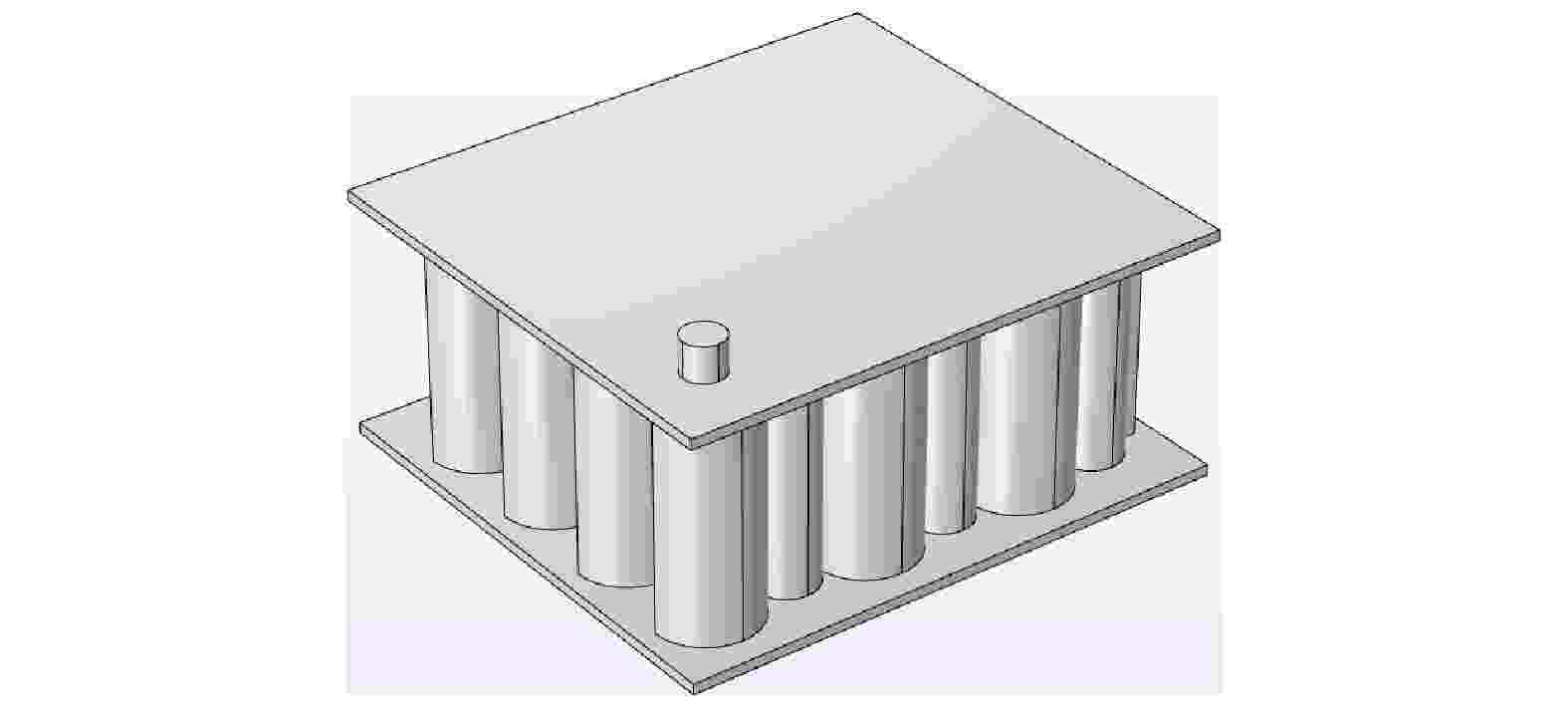
EDITOR'S SUGGESTION
2022, 71 (18): 184702.
doi: 10.7498/aps.71.20220212
Abstract +
A detailed three-dimensional thermal model is developed to examine the thermal behaviour of a lithium-ion battery. This model is a cross-flow liquid cooling model, which can make the heat dissipation of lithium-ion battery pack achieve higher safety. Two kinds of fluids are used for cooling, and the polynomial fitting function is used as the heat source term of lithium battery pack. The battery temperature distribution under the conditions of different Reynolds numbers, different numbers of micro-channel and different micro-channel radii are studied for this model. The simulation results show that the maximum battery temperature is 295.84 K, the minimum battery temperature is 293.14 K, and the maximum temperature difference of the battery pack is 2.7 K. The maximum temperature and temperature difference of the battery under the model are in line with the reasonable operating temperature range of lithium-ion battery pack. The maximum temperature of battery pack decreases with the increase of Reynolds number, but the effect of Reynolds number on heat dissipation of lithium-ion battery pack has a critical value. As the number of micro-channels increases, the maximum temperature of the battery string decreases. However, when the number of micro-channels increases to a certain value, the maximum temperature of the battery pack decreases slowly. The maximum temperature of the battery pack does not decrease monotonically as the radius of the micro-channel increases. Orthogonal analysis results show that the Reynolds number has the greatest influence on the cooling effect of the model, followed by the size of the micro-channel radius, and the number of micro-channels has the least influence. The optimized liquid cooling model can effectively reduce the maximum temperature of lithium-ion battery in theory, and the maximum temperature of lithium-ion battery decreases by 26.24 K in comparison with that of single battery at 2C discharge rate. The reliability of the cross-flow channel model is proved by numerical analysis, and it is also proved that the cross-flow channel has an equilibrium point between the perturbation gain and the flow retarding effect. The heat dissipation effect of lithium- ion battery pack is correlated with the number and radius of micro-channels, but not a single positive correlation. Reasonably increasing the number and size of micro-channels can effectively enhance the heat dissipation effect of battery pack.
PHYSICS OF GASES, PLASMAS, AND ELECTRIC DISCHARGES

2022, 71 (18): 185201.
doi: 10.7498/aps.71.20220945
Abstract +
Fermi-Pasta-Ulam-Tsingou recurrence (FPUT) phenomenon refers to the property of a multimode nonlinear system returning to the initial states after complex stages of evolution. The FPUT recurrence phenomenon closely links with modulation instability (MI) by employing the perturbed continuous waves as the initial condition. When the perturbation frequency is located inside the MI spectra, then the perturbed CWs are unstable and the perturbations will grow up with evolution. This nonlinear MI evolution results in the FPUT phenomenon. In this work, we explore in detail the effects of perturbation amplitude and perturbation frequency on the FPUT recurrence phenomena numerically, which has never been studied systematically, to the best of our knowledge. Using the results of our studies, we find that the perturbation amplitude can significantly affect the FPUT phenomenon. Firstly, the number of FPUT cycles is very sensitive to the perturbation amplitude. Large (small) perturbation amplitude can result in much more (much less) FPUT cycles. Secondly, very irregular (regular) FPUT wave evolution together with the corresponding spectra evolution can be observed at relatively large (small) values of perturbation amplitude, where the unequal (equal) distances are observed between adjacent maximum wave amplitudes spatially in the background of optical fibers. In contrast, the effects of perturbation frequency on the FPUT cycles are relatively minor, and the maximum FPUT cycles are observed at perturbation frequencies around the optimal modulation frequency generating the peak MI gain. However, the perturbation frequency can drastically affect the number of high-order sidebands excited at the distances of periodic maximum wave amplitude formation. We find that larger perturbation frequency leads to much fewer high-order sidebands. According to our studies, for observing FPUT conveniently and observing more FPUT cycles, the perturbation amplitude of the input signal should be as large as possible and the perturbation frequency should be around the optimum modulation frequency. We should also emphasize that the large perturbation amplitude results in irregular FPUT patterns with unequal distances between adjacent maximum wave amplitude formations spatially in the background of optical fibers, and large perturbation frequency results in much less high-order sidebands. Our results will provide very helpful information for the FPUT observation in experiment, and should arouse the interest of the readers in nonlinear physics.

2022, 71 (18): 185202.
doi: 10.7498/aps.71.20220729
Abstract +
The Chinese First Quasi-axisymmetric Stellarator (CFQS) is now the only quasi-axisymmetric stellarator under construction in the world. In this work, ion temperature gradient (ITG) mode in CFQS is studied by using gyrokinetic Vlasov code GKV. The basic characteristics of the eletrtostatic ITG are separately given under the adiabatic condition and the non-adiabatic condition. There is a critical temperature gradient for ITG. The growth rate of ITG is proportional to the temperature gradient. Furthermore, the growth rate depends on not only the absolute value of density gradient, but also the plus or minus sign of the density gradient. The negative density gradient can strongly suppress the ITG. The kinetic electron can destabilize the ITG and the electron temperature gradient can also destabilize the ITG. For electromagnetic condition, the ITG modes can be suppressed by the finite plasma beta, and then a transition from ITG to Alfvenic ion temperature gradient mode/kinetic ballooning mode (AITG/KBM) comes into being. The maximum growth rate of KBM is linearly proportional to density gradient and temperature gradient when both gradients are large.
CONDENSED MATTER: ELECTRONIC STRUCTURE, ELECTRICAL, MAGNETIC, AND OPTICAL PROPERTIES
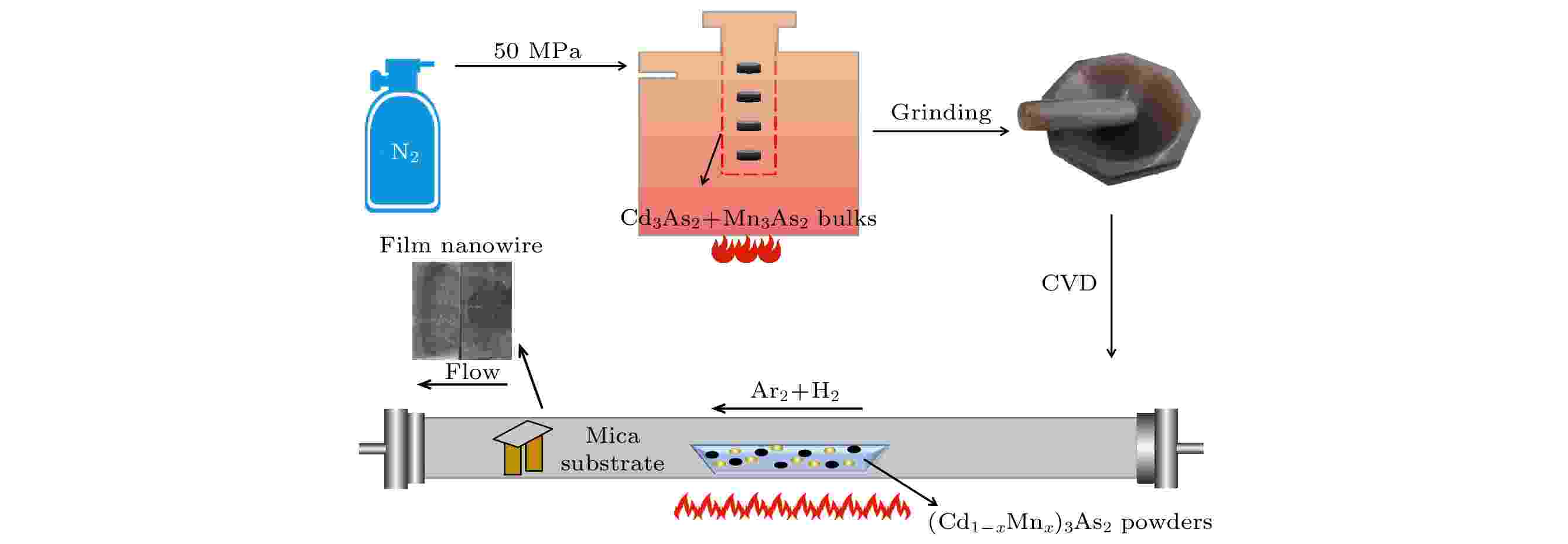
2022, 71 (18): 187201.
doi: 10.7498/aps.71.20220584
Abstract +
Cd3As2, especially its various nanostructures, has been considered as an excellent candidate for application in novel optoelectronic devices due to its ultrahigh mobility and good air-stability. Recent researches exhibited Cd3As2 as a candidate of thermoelectric materials by virtue of its ultralow thermal conductivity in comparison with other semimetals or metals. In this work, at first ( Cd1–xMnx)3As2 (x = 0, 0.05, 0.1) bulk alloys are prepared by high-pressure sintering to suppress the volatilization of As element, and then several kinds of Mn3As2-doped Cd3As2 nanostructures are obtained on mica substrates by chemical vapor deposition (CVD), with bamboo-shoot-nanowire structure forming in a high-temperature region and films in a low-temperature region. Effects of Mn3As2 doping on the crystalline structure, phase compositions, microstructures and thermoelectric properties of the Cd3As2 nanostructures are systematically studied. Energy-dispersive spectrometer (EDS) analysis at various typical positions of the Mn3As2-doped Cd3As2 nanostructures shows that the Mn content in these nanostructures is in a range of 0.02%–0.18% (atomic percent), which is much lower than the Mn content in ( Cd1–xMnx)3As2 (x = 0, 0.05, 0.1) parent alloys. The main phases of these nanostructures are all body centered tetragonal α phase with a small amount of primitive tetragonal α′ phase. Doping results in the α″ phase and Mn2As impurity phase occurring. The Cd3As2 film presents a self-assembled cauliflower microstructure. Upon Mn3As2 doping, this morphology finally transforms into a vertical-growth seashell structure. In a high temperature region of the mica substrate, a unique bamboo-shoot-nanowire structure is formed, with vertical-growth bamboo shoots connected by nanowires, and at the end of these nanowires grows a white pentagonal flower structure with the highest Mn content of 0.18% (atomic percent) for all the nanostructures. Conductivity of the Cd3As2 film and the bamboo-shoot-nanowire structure are ~20 and 320 S/cm, respectively. The remarkable conductivity enhancement can be attributed to higher crystallinity and the formation of nanowire conductive network, which significantly increase carrier concentration and Hall mobility. The Hall mobility values of the nanowire structures range from 2271 to 3048 cm2/(V·s) much higher than the values of 378–450 cm2/(V·s) for the films. The Seebeck coefficient for the bamboo-shoot-nanowire structure is in a range of 59–68 µV/K, which is about 15% higher than those for the films (50–61 µV/K). Although maximal power factor of the bamboo-shoot-nanowire structure is 14 times as high as that of the thin film, reaching 0.144 mW/(m·K2) at room temperature, this value is still one order of magnitude lower than the previously reported value of 1.58 mW/(m·K2) for Cd3As2 single crystal.

2022, 71 (18): 187301.
doi: 10.7498/aps.71.20220627
Abstract +
Perovskite heterostructure has a honeycomb lattice when a bilayer along the [111] direction is considered. The material usually presents a wealth of unique properties. Recently, (111)-oriented perovskite heterojunctions have received more and more attention. In this work, the first-principle calculations are employed to investigate the electronic and magnetic properties of (SrVO3)5/(SrTiO3)1 (111) heterostructure. The calculations show that the ground state of (SrVO3)5/(SrTiO3)1 (111) heterostructure is a half-metallic ferromagnet. Further study reveals the existence of different correlated-electron ground states in (SrVO3)5/(SrTiO3)1 (111) heterostructure, and they can be tuned by changing in-plane strain and interfacial cation intermixing. This system can keep half-metallic properties under difffferent in-plane strains from –4% to 2%. The half-metallic properties mainly come from V 3d electrons. The ground state of the system can evolve from a half-metal to a antiferromagnetic insulator if the in-plane compressive (tensile) strain is added up to 8% (4%). The interfacial Ti-V intermixing can destroy the original half-metallic properties, and the system exhibits a ferromagnetic insulator phase. These results demonstrate that the system has potential applications in the field of spintronics, and provide a theoretical reference for the use of (SrVO3)5/(SrTiO3)1 (111) heterostructures to explore quantum phase transitions.

2022, 71 (18): 187303.
doi: 10.7498/aps.71.20220609
Abstract +
The 21st century is an era of information. In recent years, people’s demand for better data storage performance and stronger data processing capacity of memorizer has been increasing, which has prompted continuous improvement and innovation of semiconductor integrated processes and technologies and accelerated the research progress of the next generation of memory devices to break through the limits of Moore’s law. Resistive memory has been regarded as an important candidate for the next generation of non-volatile random access memory due to its main characteristics such as fast reading speed, high storage density, long storage time, low power consumption, and simple structure. Resistive switching effects have been observed in various transition metal oxides and complex perovskite oxides, but the appropriate description of the resistive switching drive mechanism is still an important issue in the development of resistive random access memories. Therefore, further research is very important to clearly explain the phenomenon of resistance switching. With the demand for data storage and sensor applications increasing, materials with excellent ferroelectric and ferromagnetic properties have attracted great attention. The ZnO is an important semiconductor material with excellent optical and electrical properties. Bismuth ferrate (BiFeO3) has received much attention due to its excellent properties in epitaxial and polycrystalline thin films, with hundreds of publications devoted to it in the past few years. The ZnO and BiFeO3 are both important electronic materials and have important application value. Therefore, ZnO/BiFeO3/ZnO structure is adopted in this work to study the resistance switch characteristics. The resistance conversion effect in ZnO/BiFeO3/ZnO structure is measured. In this work, the Ni/ZnO/BiFeO3/ZnO/ITO multilayer nano-film storage device is prepared by magnetron sputtering coating technology. The device is characterized by X-ray diffractometer, scanning electron microscope and other equipment, and its resistance performance is further tested by Keithley 2400. The device exhibits obvious bipolar resistance switching effect, and the resistance switching characteristics of the sample, including switching ratio, tolerance and conductivity, vary significantly with the interference of the applied magnetic field. The bipolar resistance switching effect can be explained by the capture and release of oxygen vacancies trapped inside the material. The effect of magnetic field on Ni/ZnO/BiFeO3/ZnO/ITO thin film device should be attributed to the change of schottky barrier at Ni/ZnO interface, caused by magnetic field.
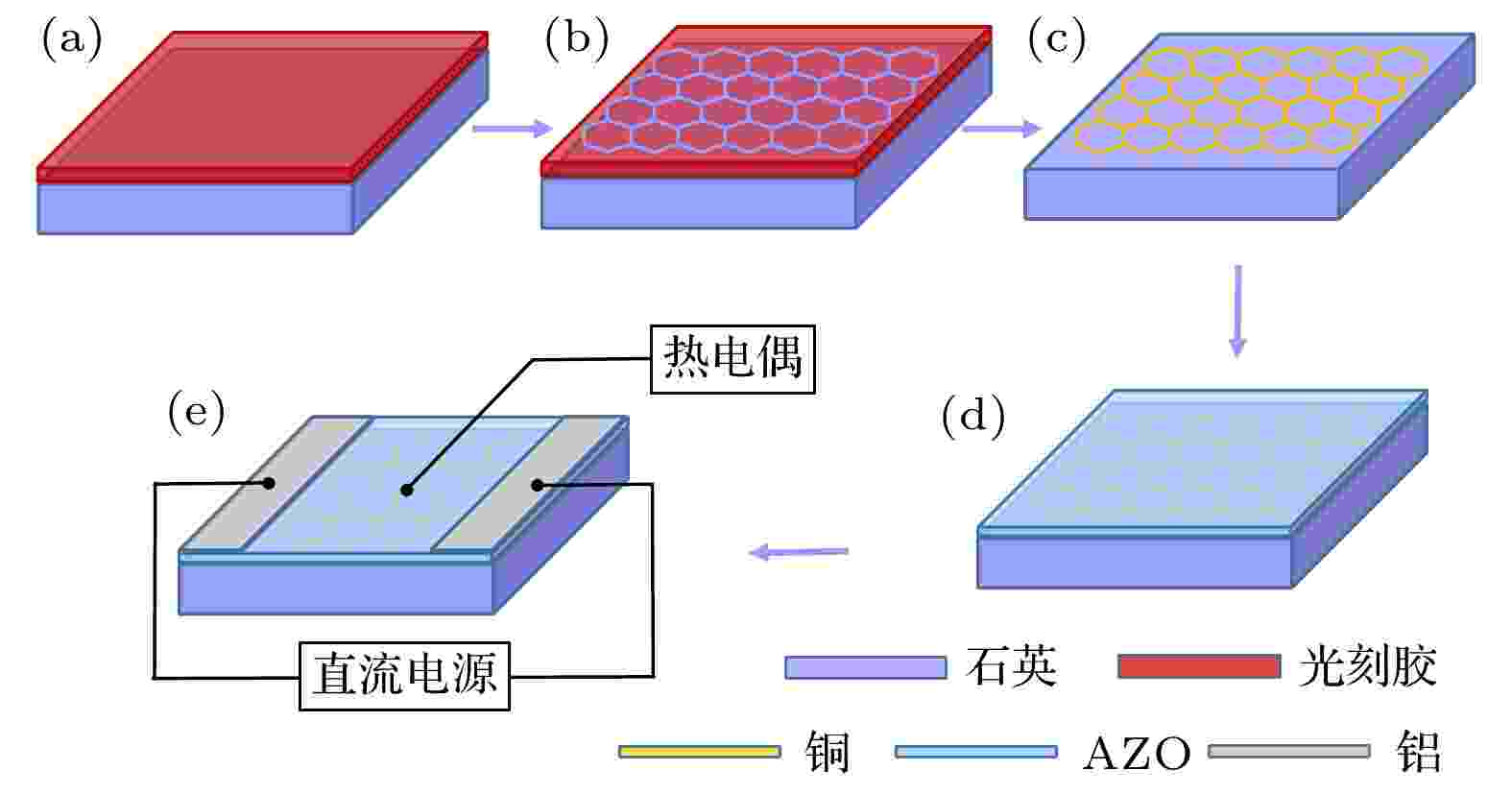
EDITOR'S SUGGESTION
2022, 71 (18): 187304.
doi: 10.7498/aps.71.20220529
Abstract +
Transparent conductive films (TCFs) play an indispensable role in optoelectronic devices because of their high conductivity and high optical transmittance. In order to obtain indium-free transparent conductive films with better performance, we need to improve the conductivity, while not damaging the transmittance. Metal mesh is highly conductive but prone to oxidation and abrasion, while transparent conductive oxide (TCO) is stable but less conductive. Thus, we composite the metal mesh with the stable TCO to achieve complementary advantages. In this work, we fabricate a hexagonal Cu mesh and then cover the Cu mesh with Al-doped ZnO (AZO) film by using lithography and magnetron sputtering. The line width and length of mesh are 15 µm and 150 µm, respectively, which are not visible to the naked eye. The effect of AZO growth temperature on the properties of such AZO/Cu mesh composite film is studied and the optimal temperature is 300 ℃. By designing the mesh and optimizing the process, the transmittance (400–800 nm), sheet resistance and FoM of AZO/ Cu mesh composite film reach 86.4%, 4.9 Ω/sq and 4.73 × 10–2 Ω–1, respectively, thus possessing both transparent and conductive property. Because of its low cost, competitive optoelectronic performance and stability, the potential applications of AZO/Cu mesh composite film in transparent electronics are fantastic. When used as a transparent conductor to connect LED to 3 V DC power, the luminance of LED in series with AZO/Cu mesh composite film is lighter than that of AZO film and Cu mesh. According to the Ohmic heating effect of electric current passing through a conductor, AZO/Cu mesh composite film can be designed as electric heating film. At low voltage safe for human body, AZO/Cu mesh composite film can implement fast, uniform and stabile heat. In the cyclic electric heating test, the AZO/Cu mesh composite film can be heated rapidly to 175 ℃ all the time, showing a fast temperature response and stable cyclic performance. More importantly, the AZO is itself transparent and conductive and prevents the metal from oxidizing effectively, thus ensuring the overall performance and maintaining the electric heating response. The experimental result and simulation application show that the AZO/Cu mesh composite film has a great potential application in transparent and heating film for defogging and defrosting glass.

2022, 71 (18): 187801.
doi: 10.7498/aps.71.20220480
Abstract +
We demonstrate the generation of coherent and collimated blue light (CBL) based on cesium (Cs) 6S1/2(F = 4)→6P3/2(F' = 5)→6D5/2(F'' = 6)→7P3/2(F' = 5)→6S1/2(F = 4) diamond-type atomic system in a heated vapor cell. Two infrared pumping lasers with wavelengths at 852 nm (6S1/2→6P3/2) and 917 nm (6P3/2→6D5/2), provide step-wise excitation to the 6D5/2 excited state, and induce strong two-photon coherence between the 6S1/2 state and 6D5/2 state. The atoms undergo a double cascade accompanied with the amplified spontaneous emission at 15.1 μm via the 7P3/2 intermediate excited state, and produce a beam of 455 nm (7P3/2→6S1/2) CBL with highly spatiotemporal coherence through a parametric four-wave mixing process. We investigate the influence of experimental parameters such as polarization combination of the two pumping lasers, and their power, and the temperature of Cs vapor cell on the CBL. Especially, we add a beam of 894 nm laser operating at the 6S1/2(F = 3) →6P1/2 transition as repumping laser, which can pump atoms back to the 6S1/2(F = 4) state from the 6S1/2(F = 3) state, thus significantly improving the power of CBL. This technique of the CBL enhancement via optical pumping is also useful for the other alkali metal atoms.
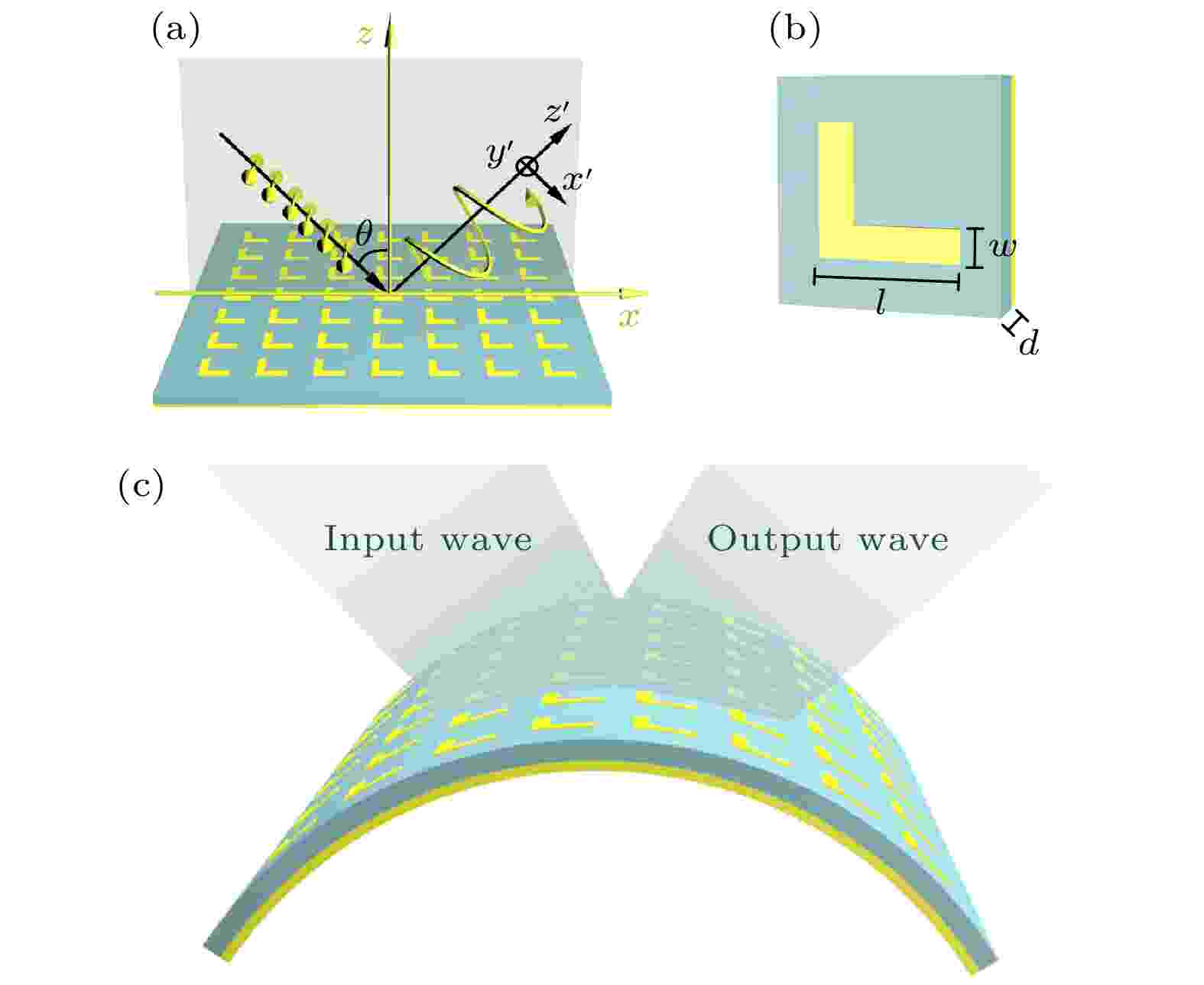
EDITOR'S SUGGESTION
2022, 71 (18): 187802.
doi: 10.7498/aps.71.20220801
Abstract +
In this work, we study the broadband manipulation of polarization states of terahertz (THz) waves with flexible metamaterial both theoretically and experimentally. Firstly, we construct a chiral THz metamaterial with asymmetric L-shaped metal-dielectric-metal structure, generating a series of electric dipoles via its interacting with terahertz waves. By changing the geometric parameters of the structure, the time responses of the electric dipoles in the two orthogonal directions are effectively modulated. Consequently, the chiral metamaterial efficiently converts linearly polarized terahertz wave into a circularly polarized one. The radiation of the metamaterial remains almost unaffected by the changing of the incident angle, which indicates that this chiral metamaterial can be used to realize a flexible terahertz circularly-polarized wave plate. Further, we present the working principle of this flexible terahertz circularly-polarized wave plate at the bending state based on the equivalent circuit model. Moreover, we fabricate a flexible metamaterial wave plate by using polymers as the dielectric layer. When the linearly polarized light is incident on the metamaterial, the circularly polarized output can be achieved in a wide frequency range of 0.46–0.62 THz. The polarization conversion remains quite stable even if the sample is bent. This flexible terahertz metamaterial wave plate is expected to be applied to 6G communication, molecular detection, etc.
INTERDISCIPLINARY PHYSICS AND RELATED AREAS OF SCIENCE AND TECHNOLOGY
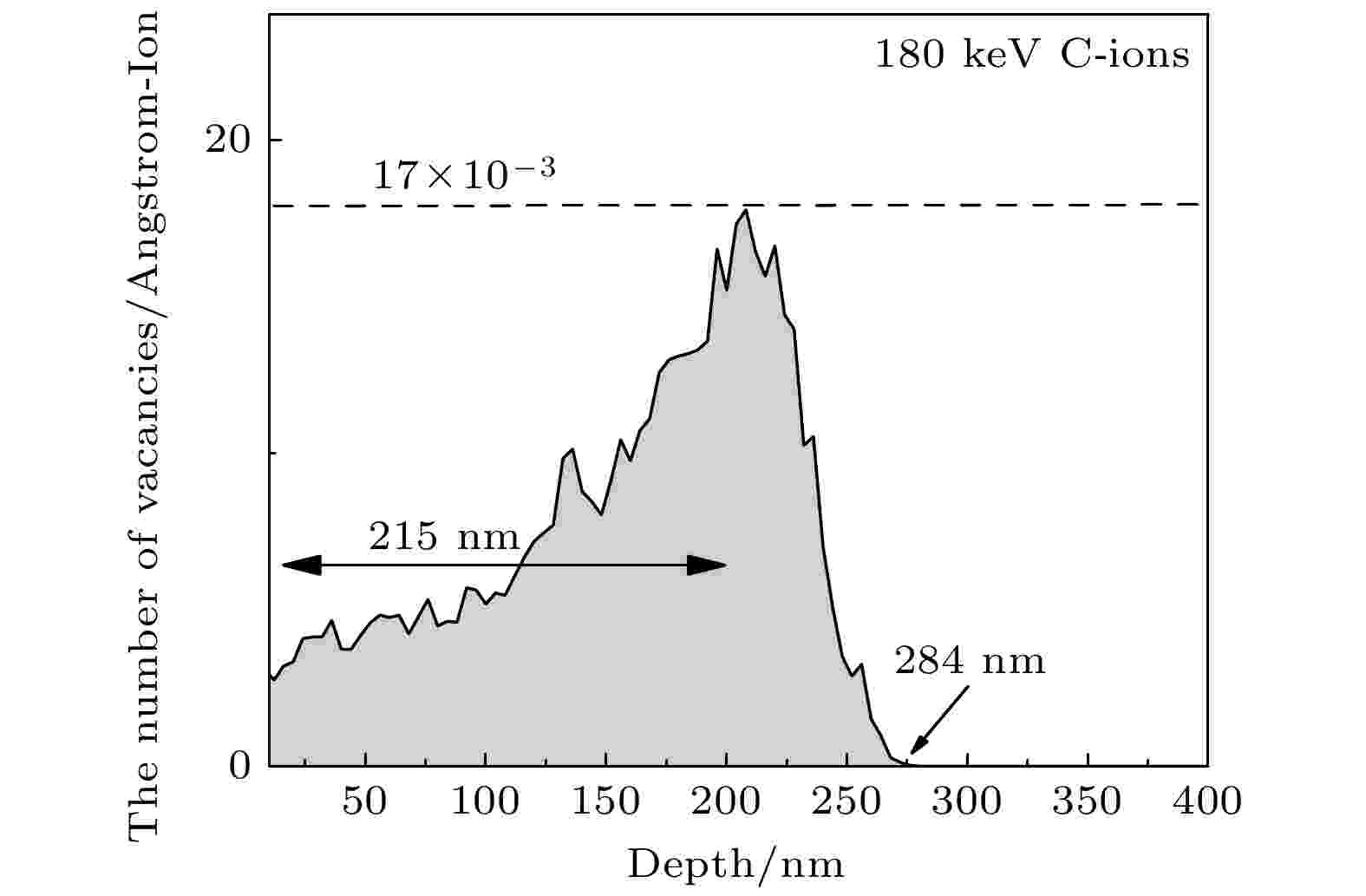
2022, 71 (18): 188102.
doi: 10.7498/aps.71.20220794
Abstract +
The shallow nitrogen-vacancy center of diamond exhibits excellent sensitivity and resolution in the magnetic detection and quantum sensing areas. Compared with other methods, low-energy carbon ion implantation does not need high-purity diamond nor introduce new impurity atoms, but the formation mechanism of nitrogen-vacancy center is not clear. In this work, shallow nitrogen-vacancy centers are created in the diamond by low energy carbon ion implantation and vacuum annealing, and the transformation mechanism of nitrogen-vacancy centers in diamond is studied by Raman spectroscopy, X-ray photoelectron spectroscopy, and positron annihilation analysis. The results show that shallow nitrogen-vacancy centers can be obtained by carbon ion implantation combined with vacuum annealing. After implantation, superficial layer of diamond shows the damage zone including lattice distortion and amorphous carbon, and carbon-vacancy cluster defects (carbon atoms are surrounded by vacancy clusters) are generated. In the vacuum annealing process, the damaged area gradually transforms into the diamond structure through the recovery of the distortion area and the solid-phase epitaxy of the amorphous carbon area, accompanied by the continuous dissociation of carbon-vacancy cluster defects. When samples are annealed at 850 and 900 ℃, the structure of the damaged area is partially repaired. While annealing at 950 ℃, not only the damaged layer is basically recovered, but also nitrogen atoms capture the single vacancy obtained by the dissociation of carbon vacancy clusters, forming the nitrogen-vacancy centers.
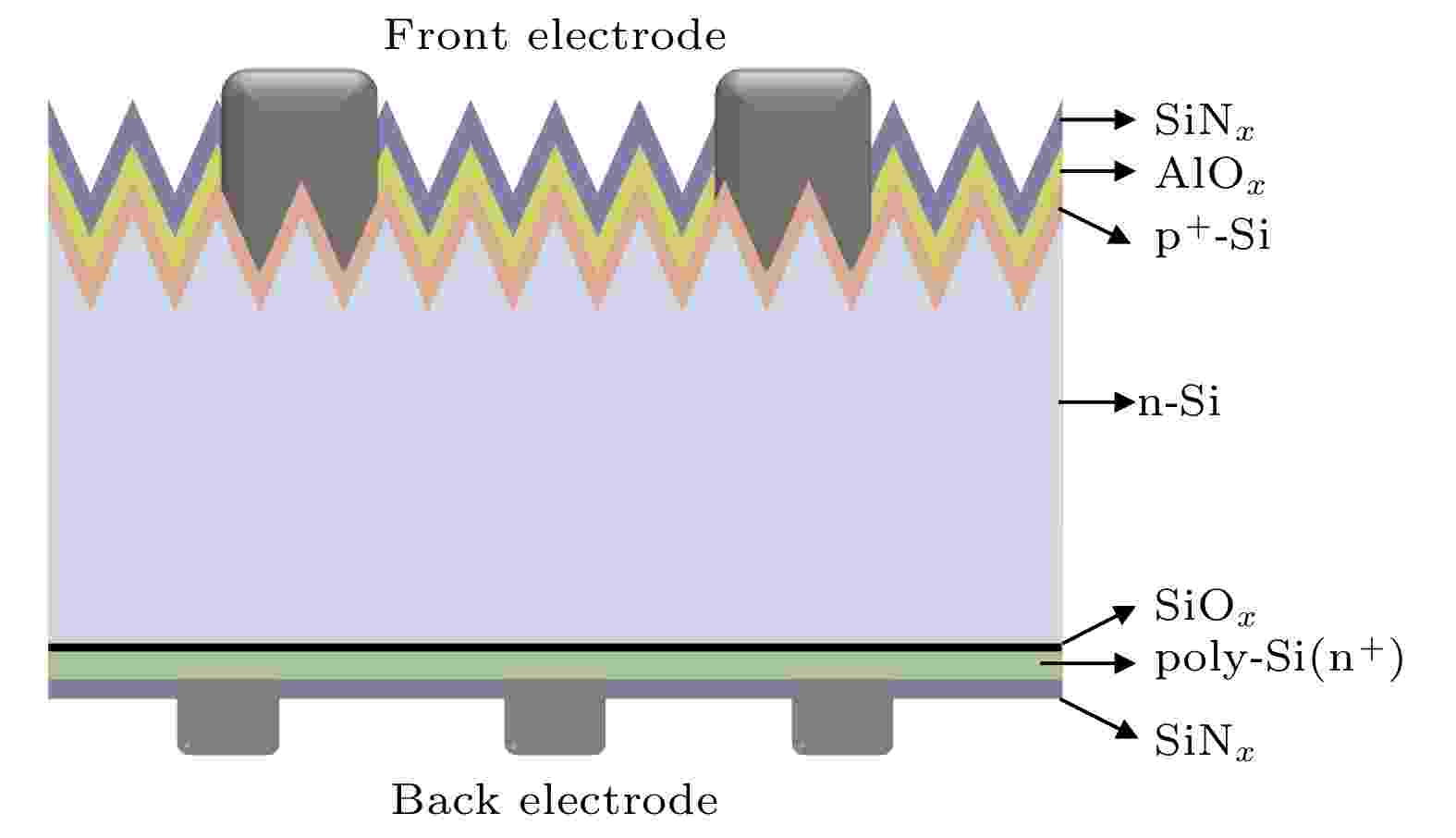
2022, 71 (18): 188201.
doi: 10.7498/aps.71.20220706
Abstract +
In tunneling oxide passivation contact (n-TOPCon) photovoltaic devices, poly-Si (n+) films with high-concentration phosphorus doping are the key materials for electron selective passivation. Its optical and electronic properties strongly depend on the chemical configuration and physical phase, and also on high temperature annealing and structural relaxation in the recrystallization process. The poly-Si (n+) films grown on SiOx/n-Si substrates by low pressure chemical vapor deposition technology are investigated, while the microstructure of the film is studied by using X-ray photoelectron spectroscopy with depth etching, high-resolution transmission electron microscopy and X-ray diffraction analysis. It is found that the binding energy values of the two fitted peaks (O2 and O3) of O 1s state of the thin film are situated at 532.1 and 533.7 eV, corresponding to the bonding of O—Si and O—P, respectively. The binding energy values of the two fitted peaks (P2 and P3) of P 2p state are located at 132.4 and 135.1 eV, corresponding to O—P* bonding with the same origin. Electronic microscopy and light diffraction analyses show that the polycrystalline silicon film has the characteristic of (111) preferential orientation, and the space of crystal plane is 0.313 nm, for which the average grain size is in a range of about 43.6–55.0 nm. However, the mechanical deformation and grain boundaries are generated in the annealing process at 920 ℃ along (111) crystal cluster, resulting in the localized monocrystalline state within large grains. The comprehensive analyses of thermodynamic function parameters of formation enthalpy, reaction entropy, heat capacity, formation energy and Gibbs free energy and energy minimum principle analysis indicate that there exist conditions for forming Si—O and P—O bonds in the polysilicon film, and thus the bonding state of silicon and phosphorus oxides are formed.
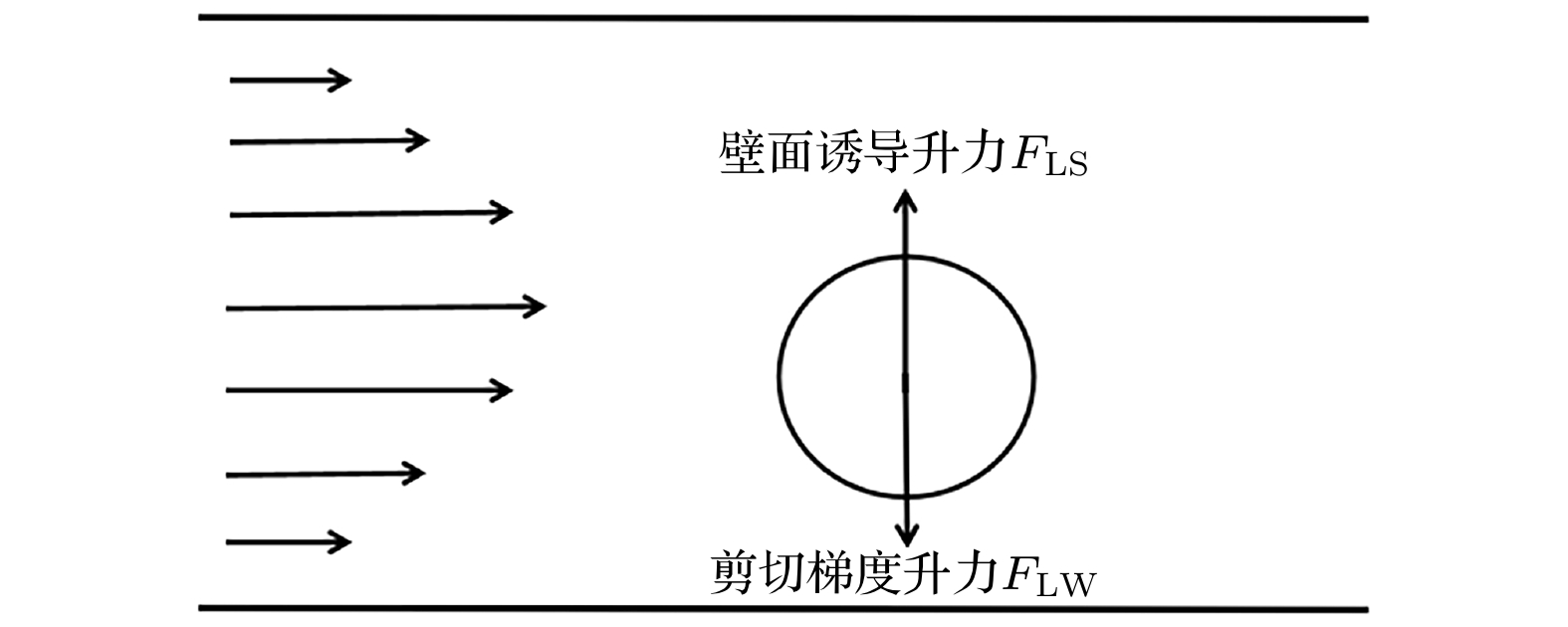
2022, 71 (18): 188701.
doi: 10.7498/aps.71.20220606
Abstract +
The finite element method based on fluid-structure interaction is used to systematically study the inertial migration of polymer vesicles in microtubule flow with a two-dimensional model, and the mechanism of the vesicles deformed by the fluid and the inertial migration phenomena are analyzed. The studies show that with the increase Reynolds number, the equilibrium position of vesicle inertial migration is farther and farther from its initial position; with the increase of blocking ratio, the equilibrium position of vesicle inertial migration is closer to the wall surface. For the modulus and viscosity of the vesicle membrane and for the membrane thickness, the results show that the modulus and viscosity determine the degree of deformation of the vesicle, and the modulus has little effect on the equilibrium position of the vesicle, but increases the viscosity, and the membrane thickness will promote the equilibrium position of the vesicle to be biased toward the center of the tube. This study helps to further clarify the deformation and equilibrium position of vesicles during inertial migration, and provides a reliable computational basis for the application of vesicles in drug transport, chemical reactions and physiological processes.

EDITOR'S SUGGESTION
2022, 71 (18): 188702.
doi: 10.7498/aps.71.20220752
Abstract +
Lipid rafts are small biomembrane functional units, resulting from the lateral phase separation of phospholipids. The phospholipid phase separation plays a crucial role in spatially organizing the biomolecules in life activities. Here, we study the kinetics of multi-component phospholipid phase separation quantitatively by using the single domain characterization methods including the movement tracking and radial fluctuation analyses, which provide valuable information about the physical and mechanical properties of the bulks and domains. The study is carried out in a low line tension condition similar to that in cells. The order of magnitude of line tension is ~0.1 pN as estimated from the radial fluctuation analysis. Fluorescence microscopy characterization shows that domains mainly coarsen through the coalescence pathways, while the evaporation-condensation is negligible. Through the tracking of domains, it is found that the bulk viscosity dominates the dynamics of domain coalescence. The coalescence of domains produces strong hydrodynamic flows in low viscosity bulk, which promotes the non-Brownian motion of surrounding domains, accelerating the lateral diffusion and coalescence of the domains. However, these hydrodynamic flows decrease significantly in high viscosity bulk. The domains rely mainly on Brownian motion to diffuse in this highly viscous medium, resulting in the slow lateral diffusion and low coalescence. Picking the domains following Brownian motion, the viscosities of liquid ordered bulk and liquid disordered bulk are determined to be, respectively, in a range of 10–8–10–7 Pa⋅s⋅m and 10–9 Pa⋅s⋅m from the Hughes-Pailthorpe-White empirical relation. Furthermore, we observe a bulk-viscosity-dependent scaling relation between the domain size and coarsening time experimentally. A theoretical model of domain diffusion and coalescence is established to understand the scaling relation. If the bulk viscosity is low, the hydrodynamic flow produces a high power exponent of 1.0. And if the bulk viscosity is high, the Brownian diffusion produces a low power exponent of 0.5. In addition, we demonstrate that the bulk viscosity can be regulated through the relative content of cholesterol. The 1,6-Diphenyl-1,3,5-hexatriene fluorescence anisotropy characterization exhibits that the increase of cholesterol in liquid ordered and liquid disordered bulks disorders and orders the phospholipid packing, thus reducing and increasing the bulk viscosity, respectively. It is expected that this viscosity regulation strategy can be used to control the multicomponent phospholipid phase separation. All in all, our study deepens the understanding of the physical mechanism behind the formation of lipid rafts. It also provides a reference for regulating the biomolecule distribution in cell membranes.

2022, 71 (18): 188703.
doi: 10.7498/aps.71.20220817
Abstract +
To realize the diversified applications of terahertz wave, a new method to realize 2-bit (4 states) coding metasurface with only two hybrid units is proposed, which combines the phase transition characteristics of VO2 and is different from the traditional metasurface. The metal wire threaded through the patch makes single-line control possible. The method of preparing the VO2 thin film and the voltage control mechanism make the design more practical. The highlight of this design is that the fixed structure array can encode different state sequences and then tune the reflected beam. On this basis, a visual design is carried out for the calculation of the coding metasurface array antenna by MATLAB. The state sequence and radiation results are predicted by actively setting the operating frequency, beam deflection angle, etc., so as to achieve active adjustment. The system does not limit the unit structure and is universal to all arrays that meet the coding conditions. In addition, a deep neural network is introduced into the array arrangement, and the structure sequence is predicted by algorithm training and verified by numerical calculation and full-wave simulation. The results show that the proposed method is effective in beam deflection angle and structure arrangement. This study presents a new way of actively and flexibly controlling terahertz waves, which has potential applications in terahertz imaging, phase-controlled radar, communication and other fields.
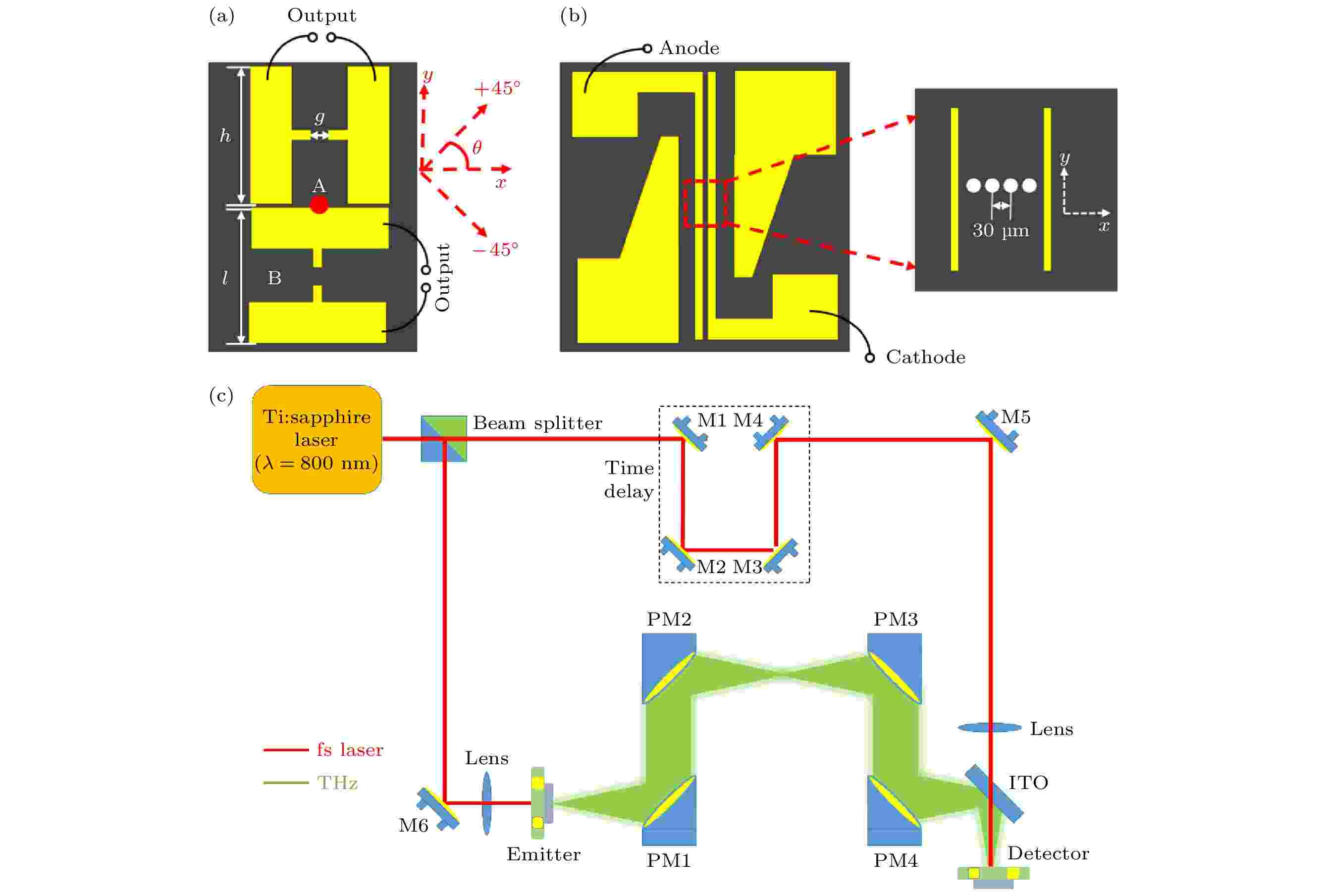
2022, 71 (18): 188704.
doi: 10.7498/aps.71.20220983
Abstract +
In the study of the interaction of terahertz (THz) wave with material, the traditional THz time-domain spectroscopy (THz-TDS) usually only detects the changes in amplitude and phase information of pulsed THz in a certain polarization direction before and after the interaction with the sample to be tested. However, in the detection of material such as anisotropic material and chiral material, only the amplitude and phase information of the sample cannot give the complete internal structure of the sample material. Anisotropic material and chiral material are very sensitive to pulsed THz of different polarization states. In order to reflect the configurations and conformations of these chiral substances through THz spectrum, it is necessary to detect the amplitude, phase and polarization state of the sample before and after pulse THz waves. The pulsed terahertz holographic detector (PTHD) in this work is composed of photoconductive antenna elements that are perpendicular to each other. The quadrature component of the pulsed THz electric field in any direction can be detected by one-time scanning, so that the changes in amplitude, phase and polarization state before and after the pulsed THz wave acts on the sample can be detected at the same time, so it is called pulsed THz wave holographic detection. Both experiments and theoretical analyses verify the reliability of the PTHD for measuring the polarization state of pulsed THz waves. At the same time, the response matrix is used to analyze that the PTHD has good symmetry in a spectral range of 0.1–2.2 THz.

















